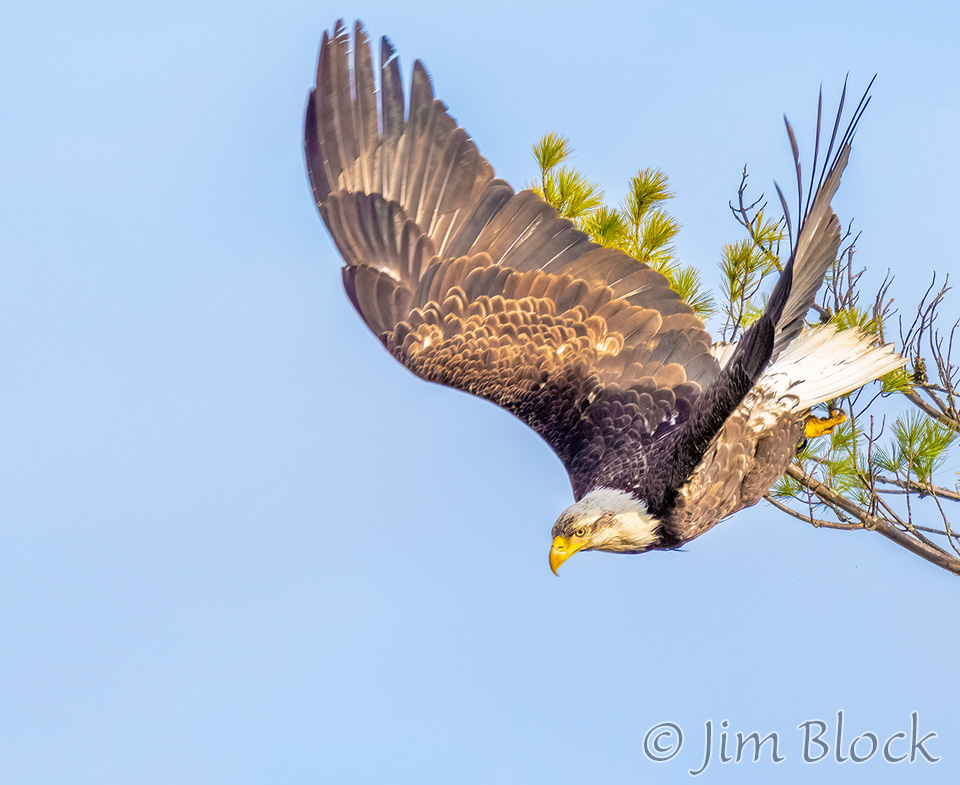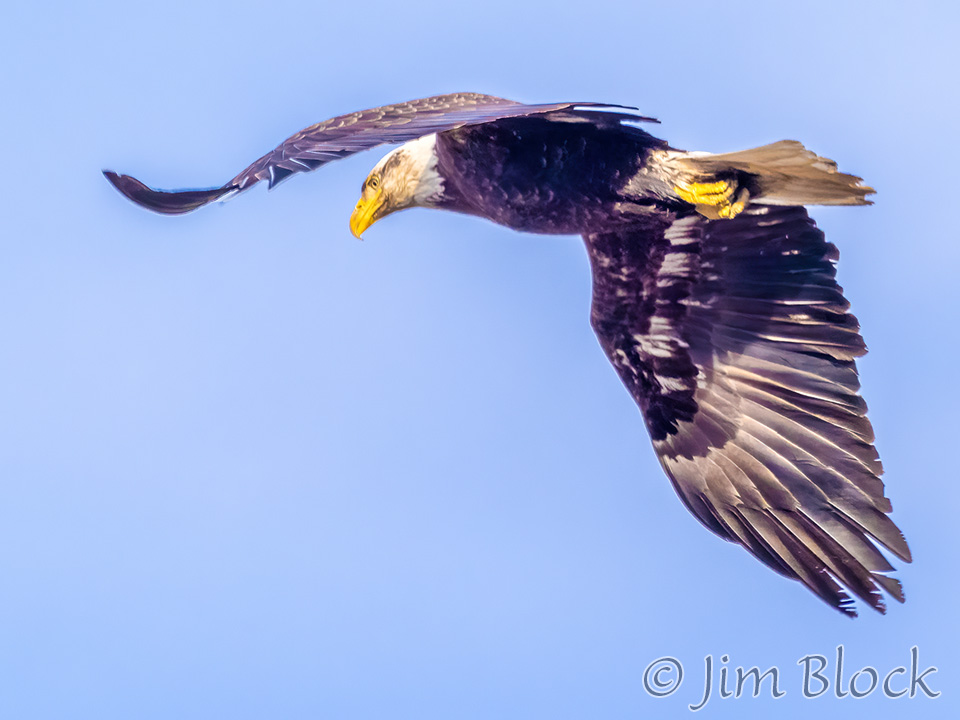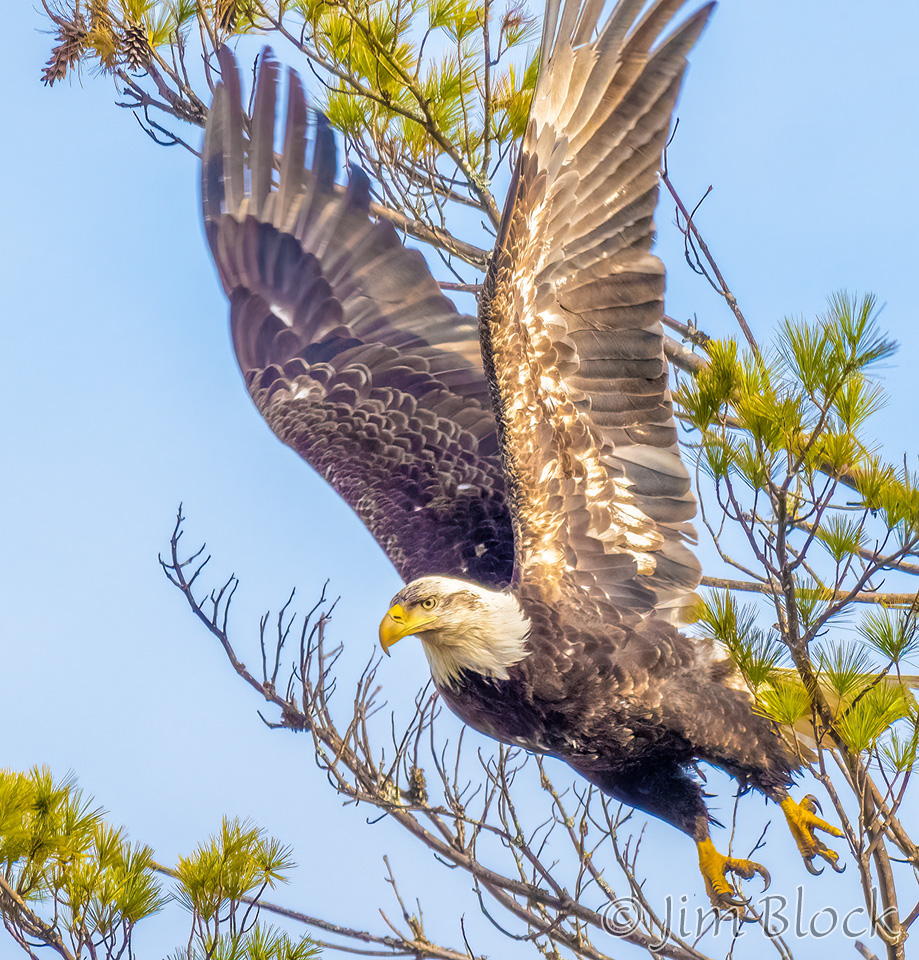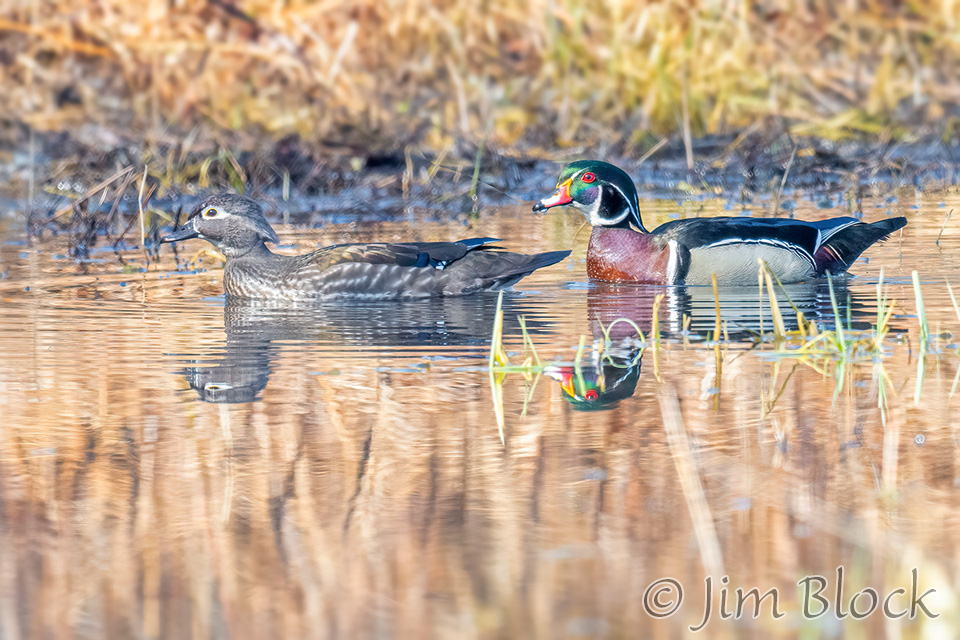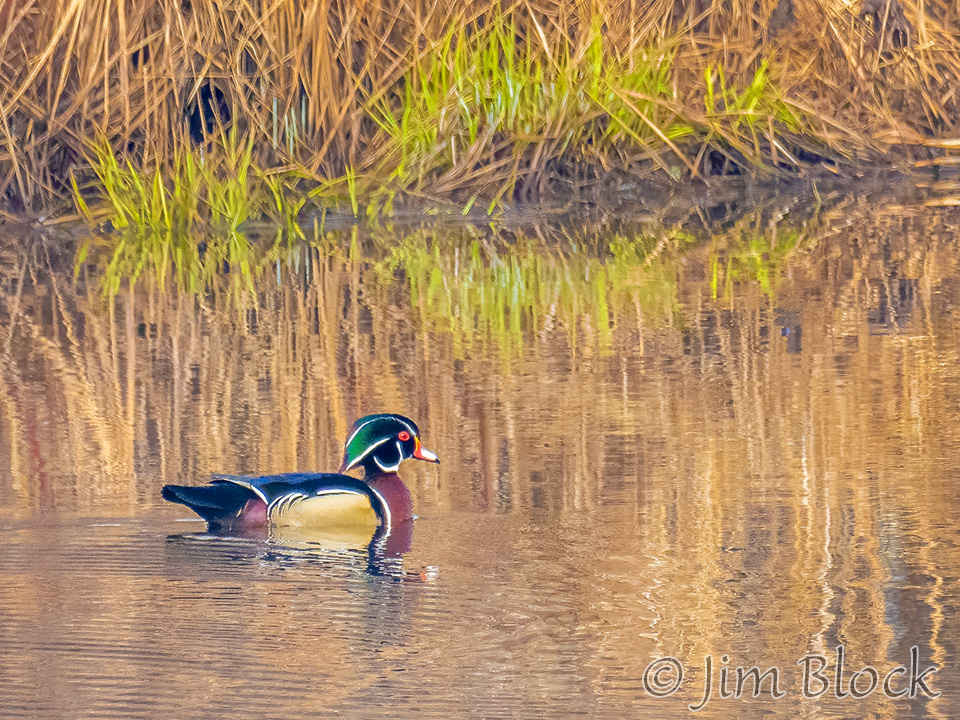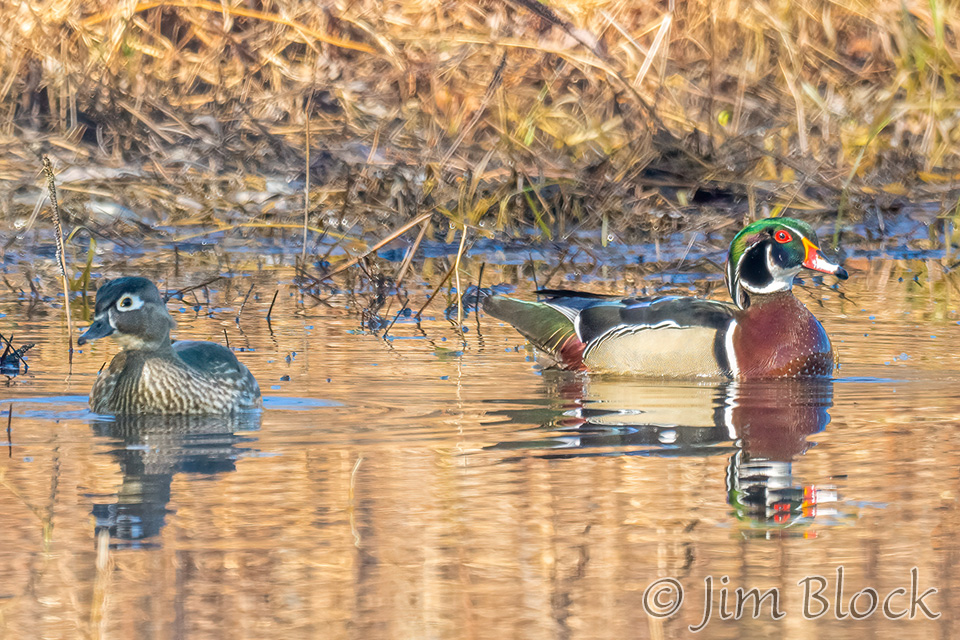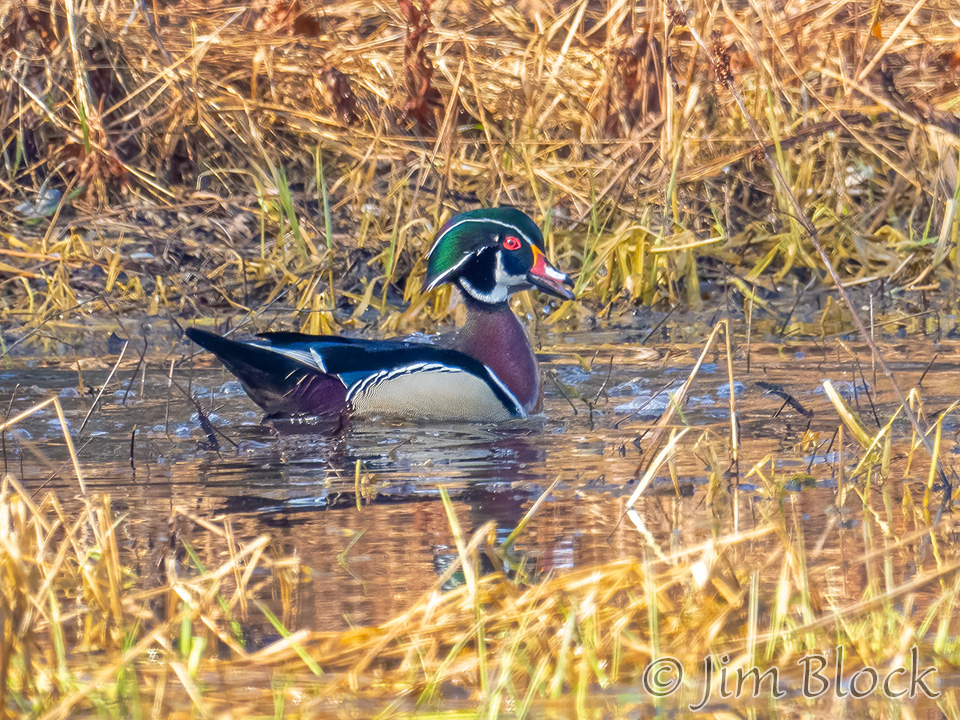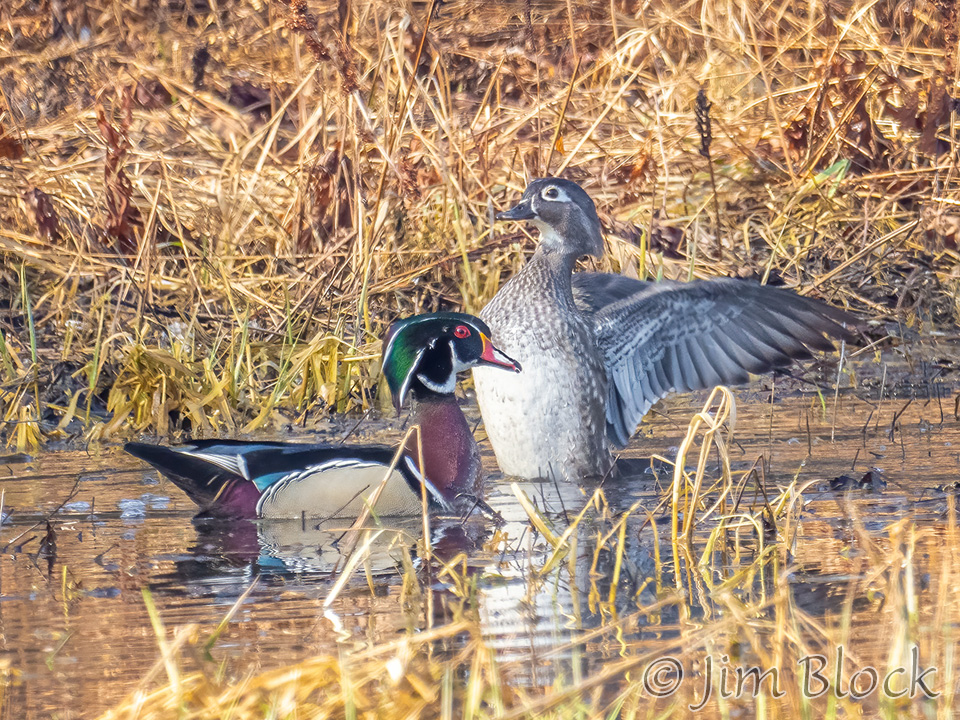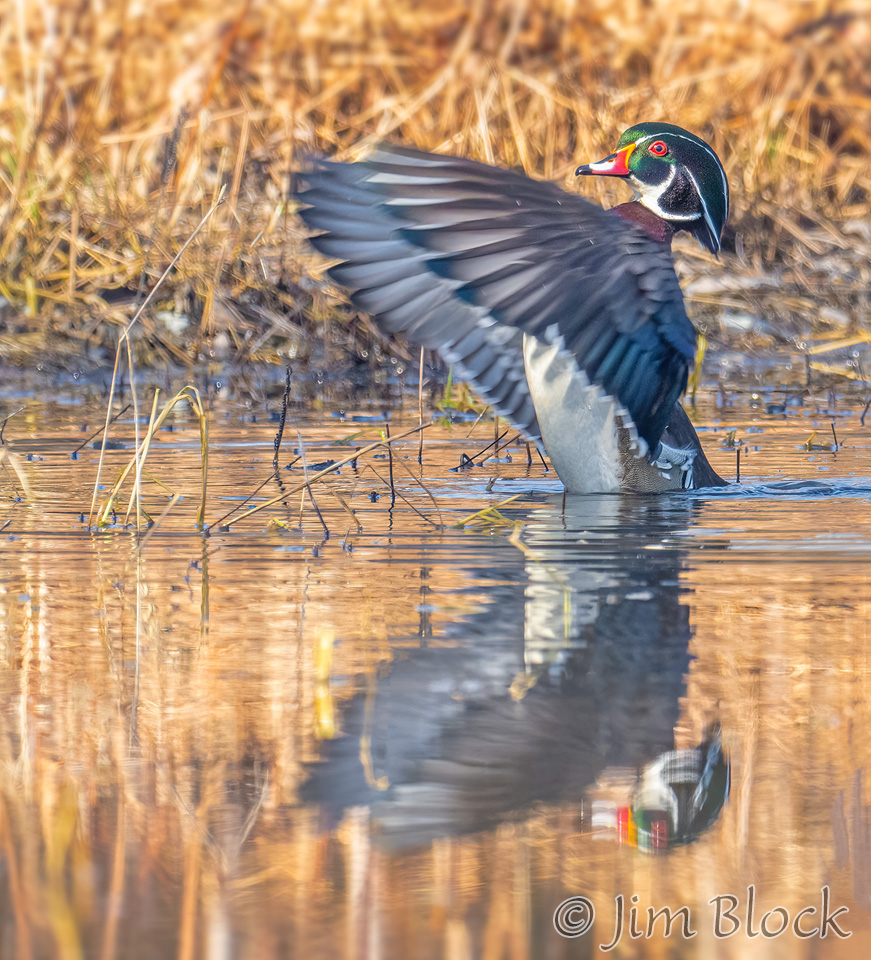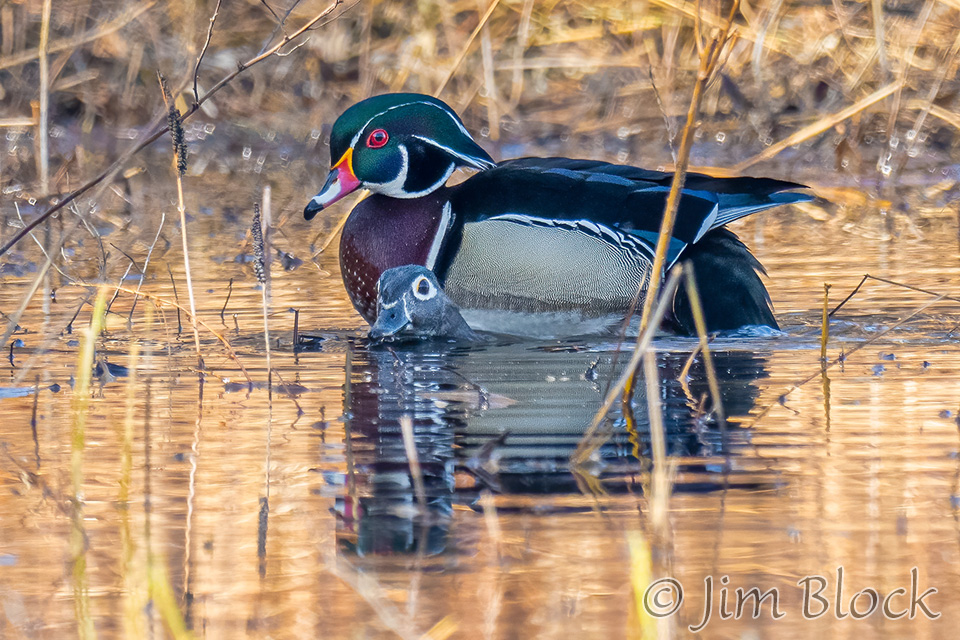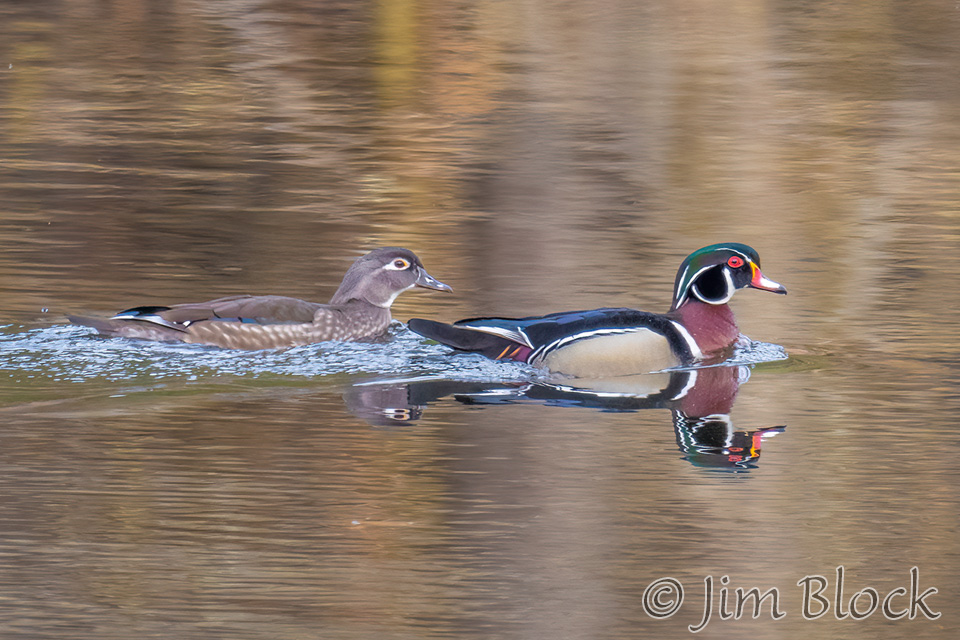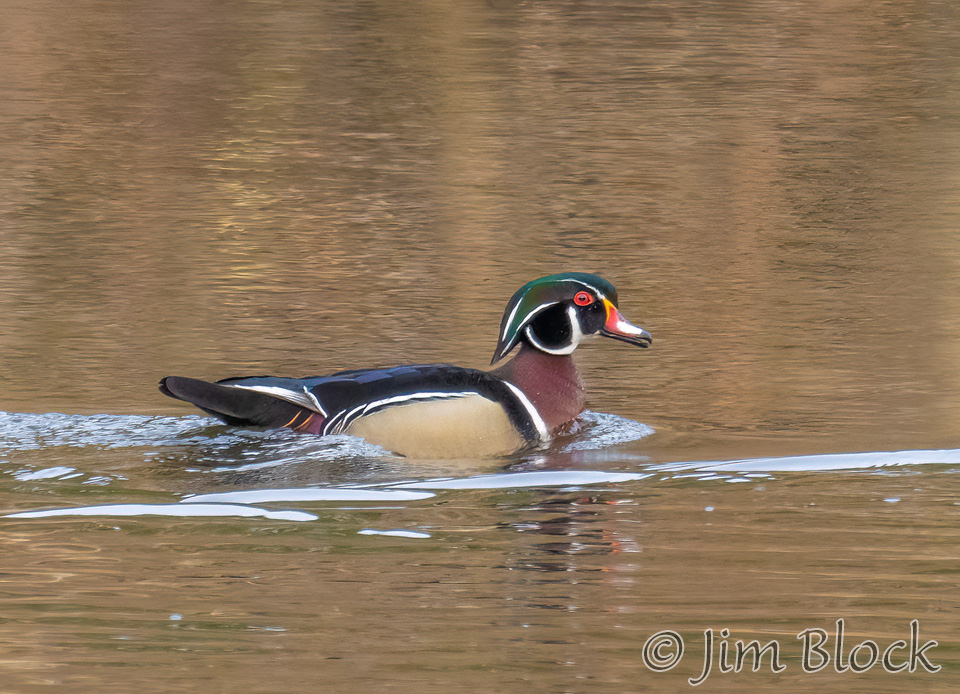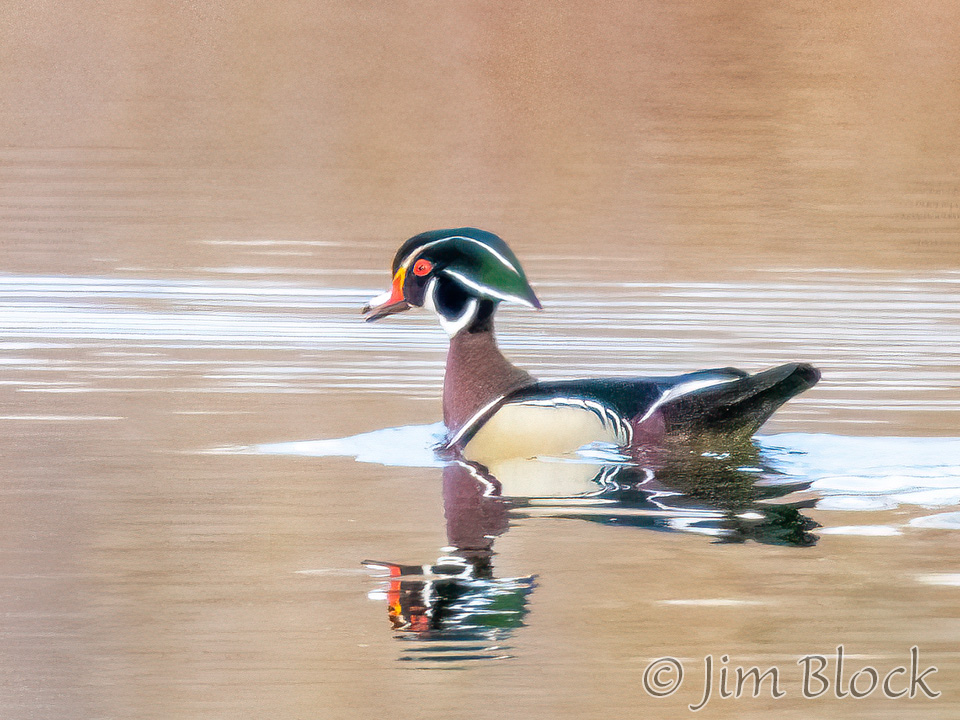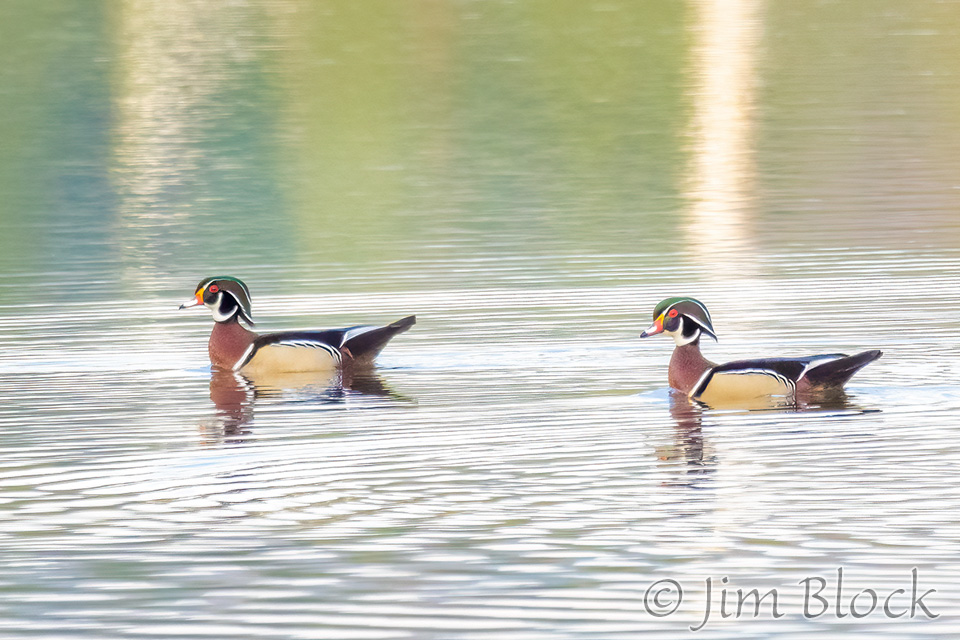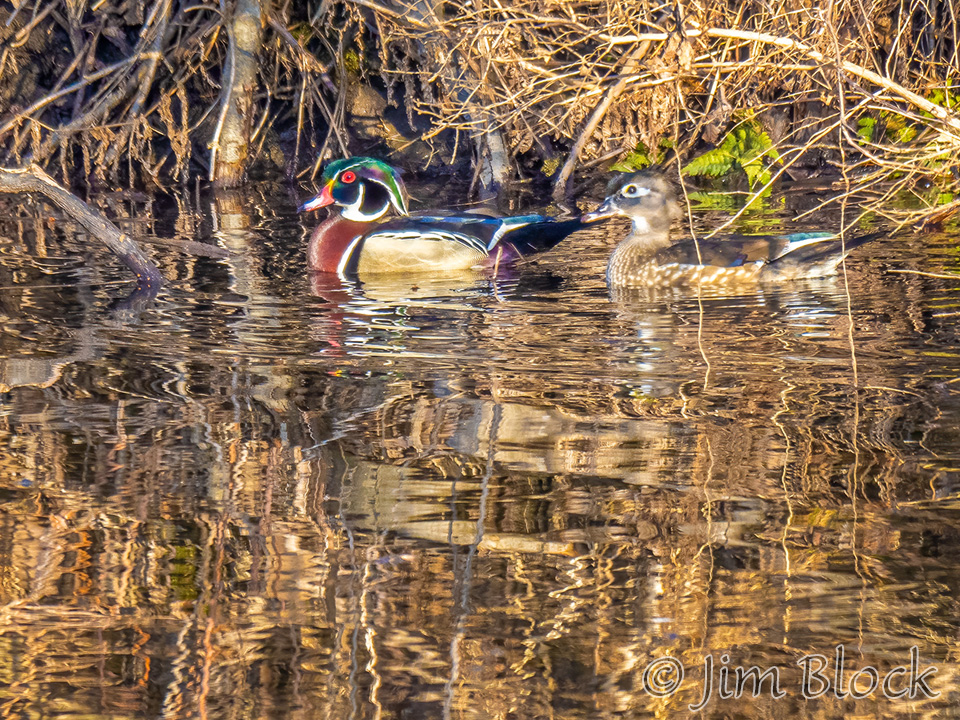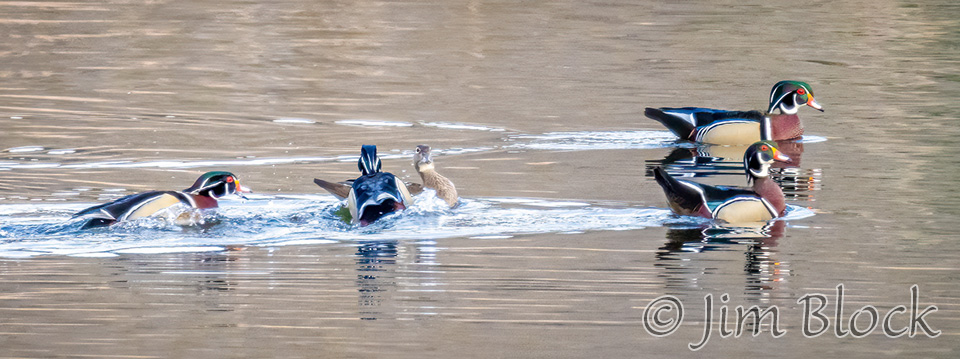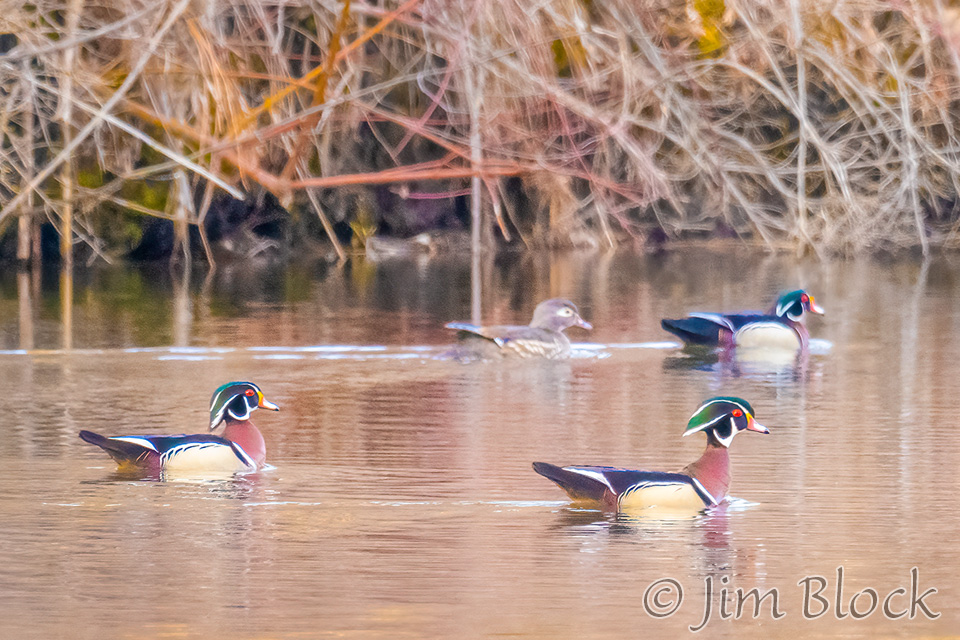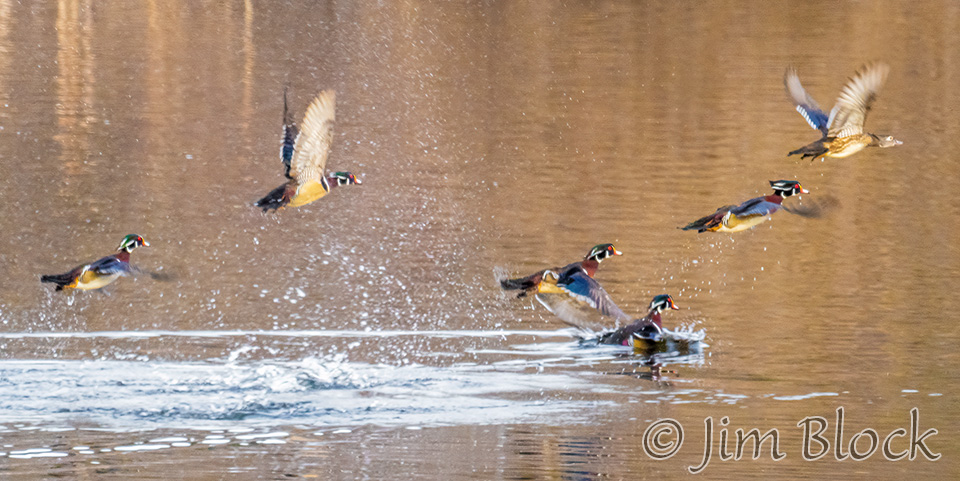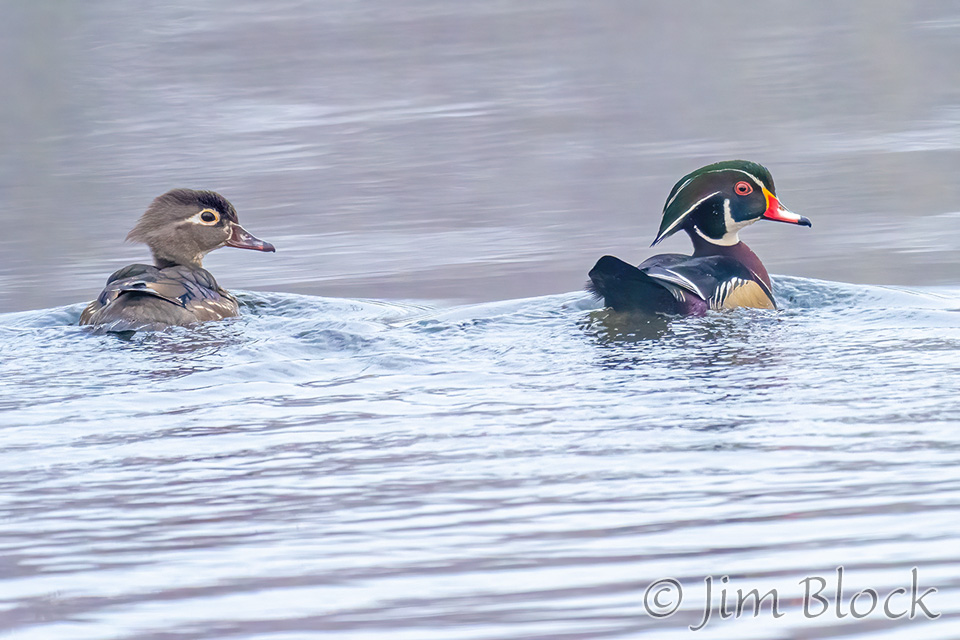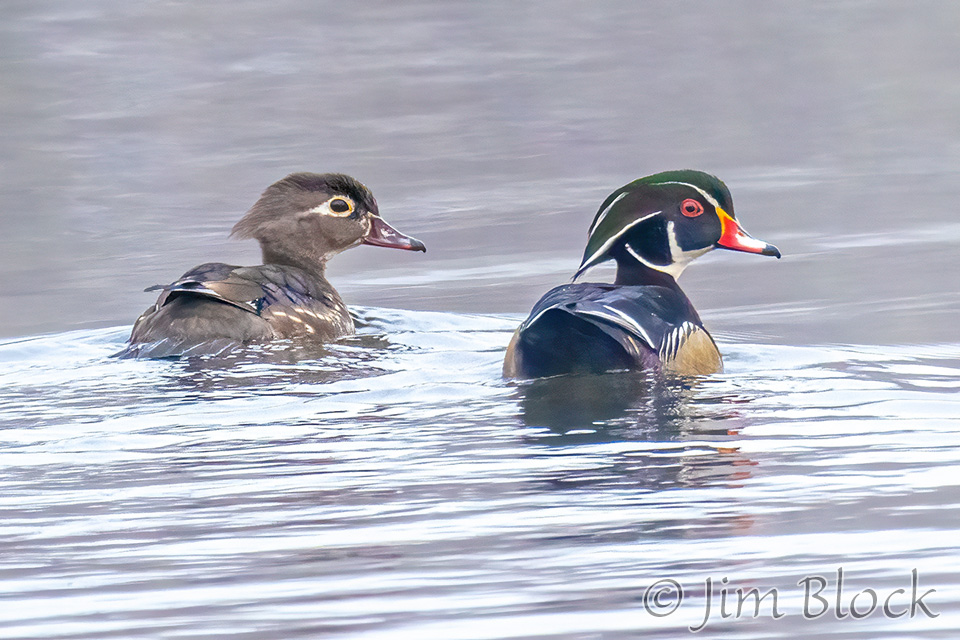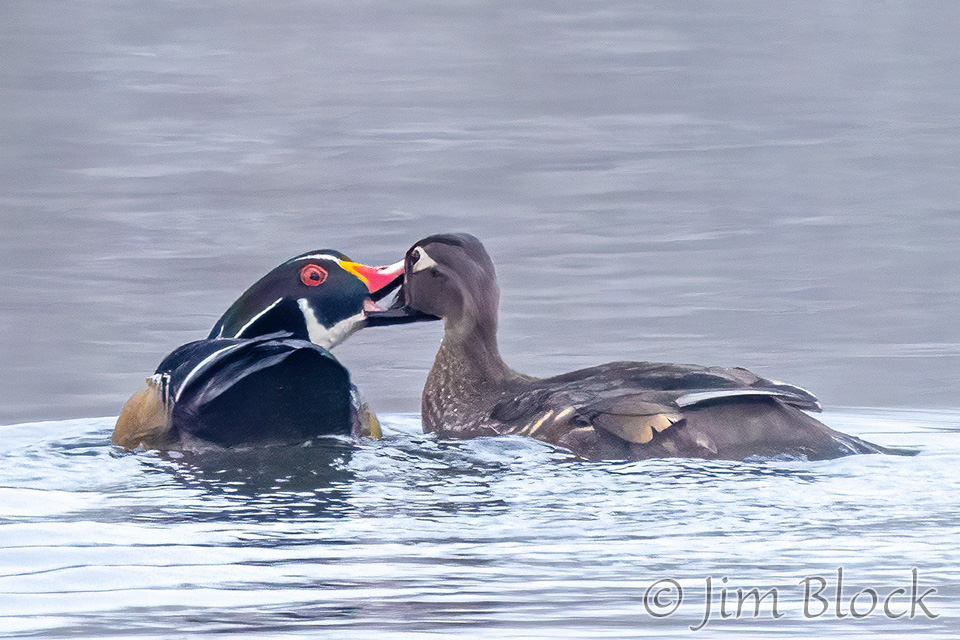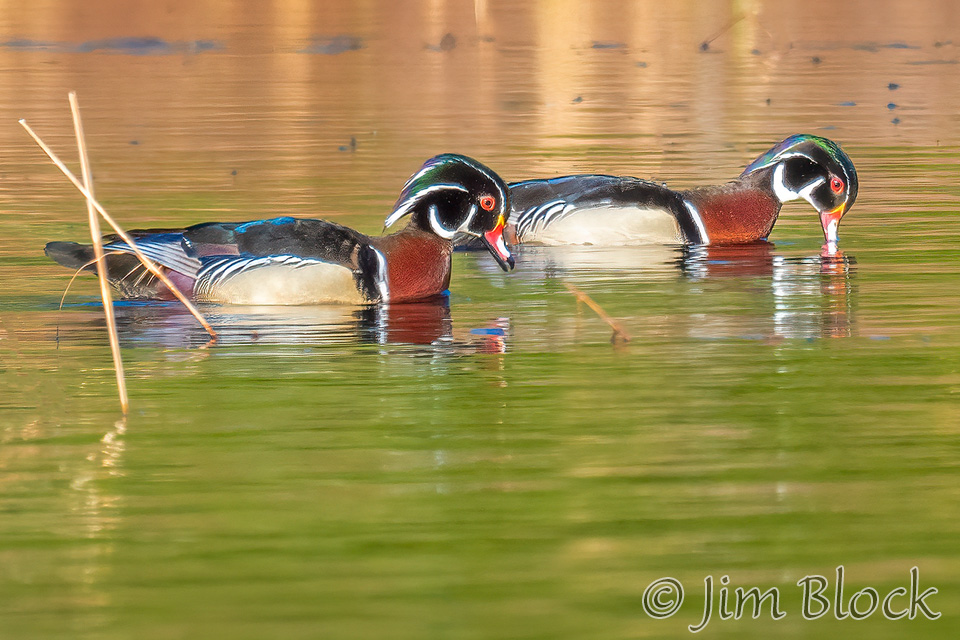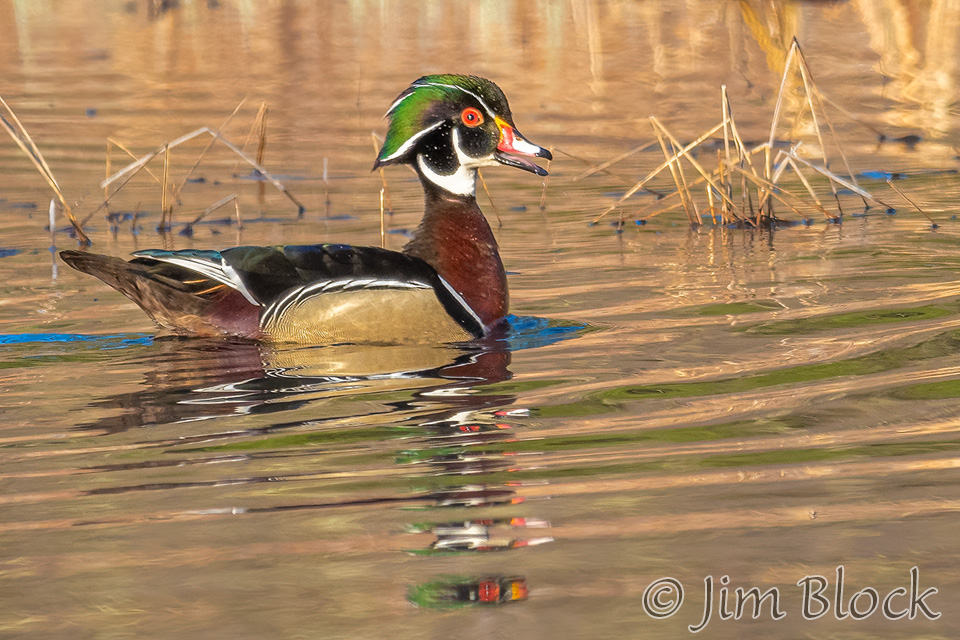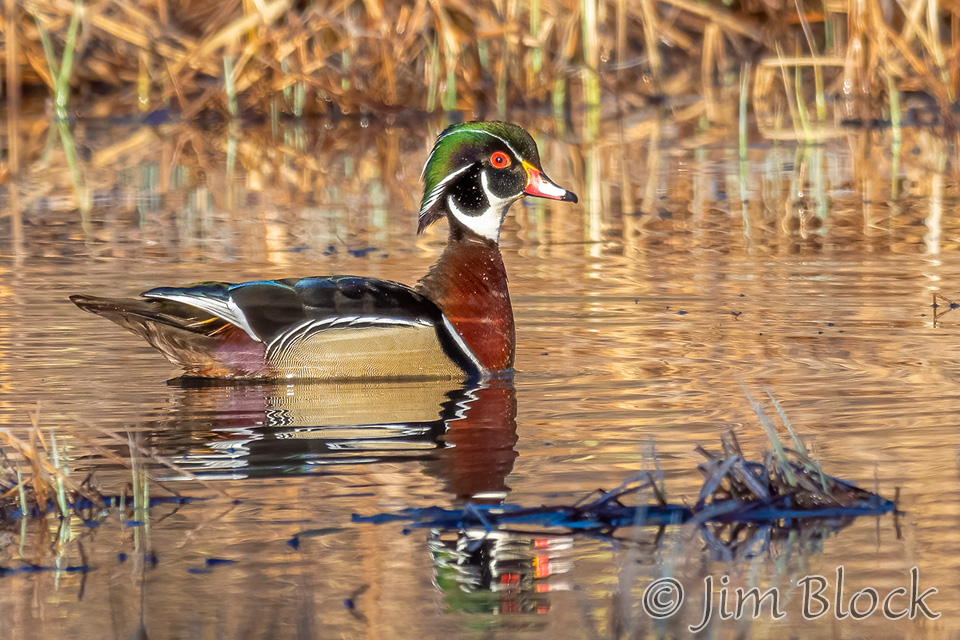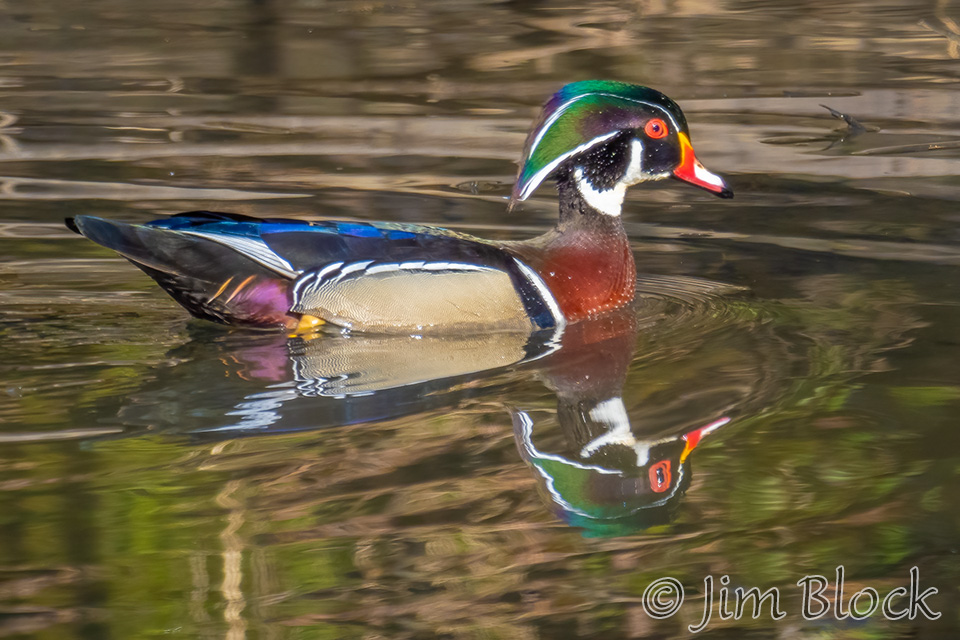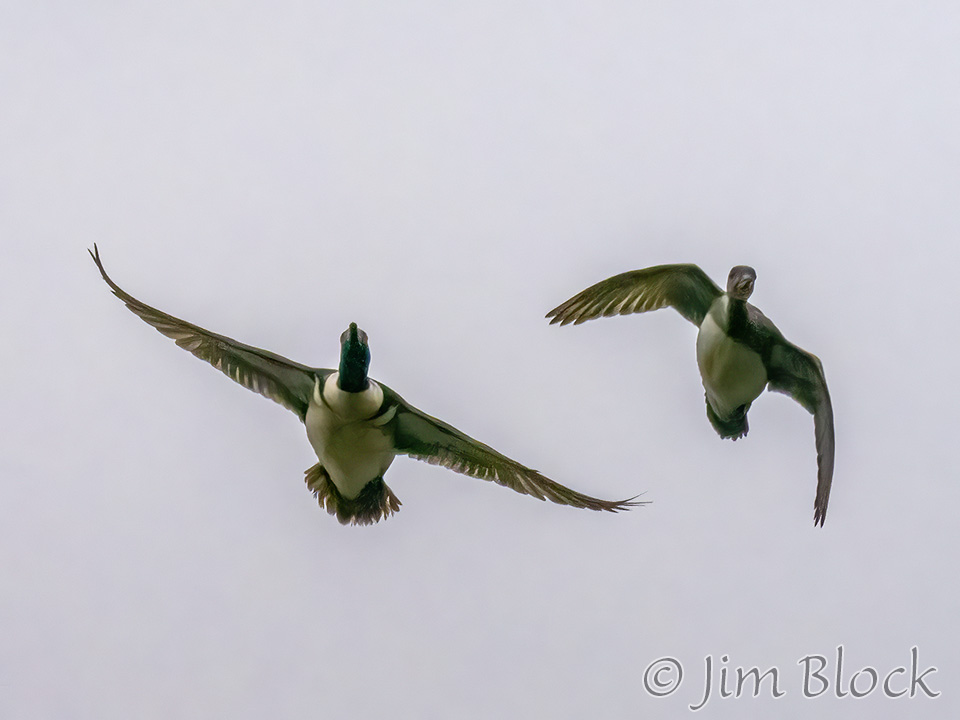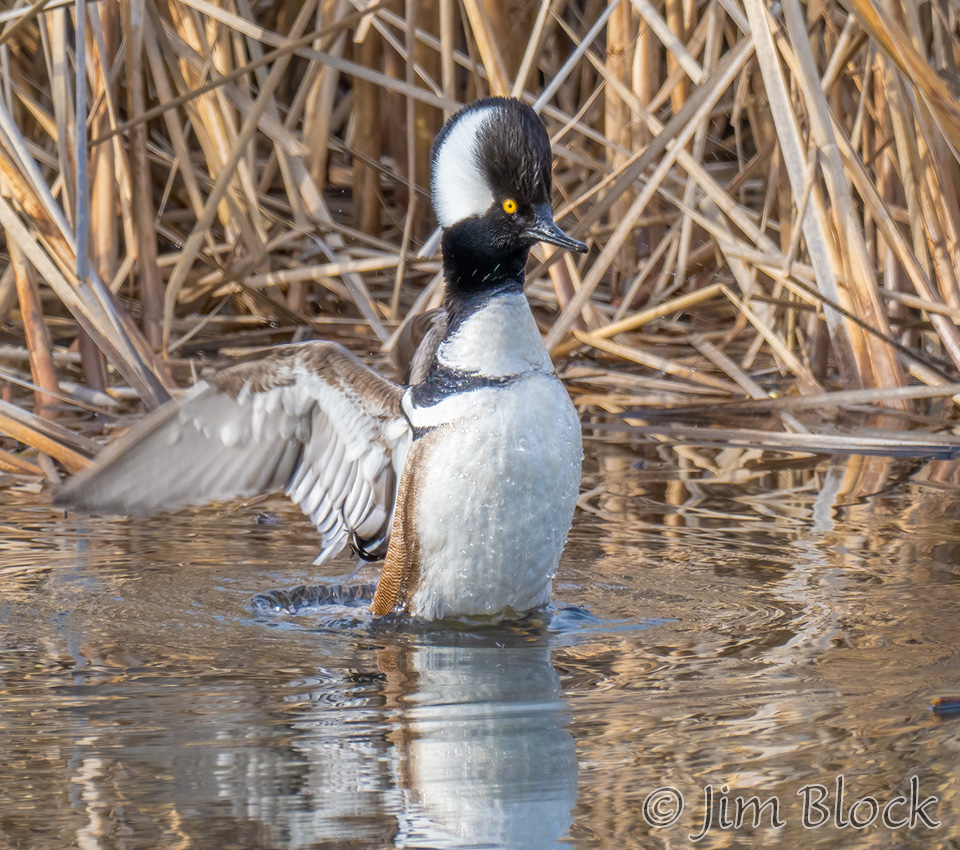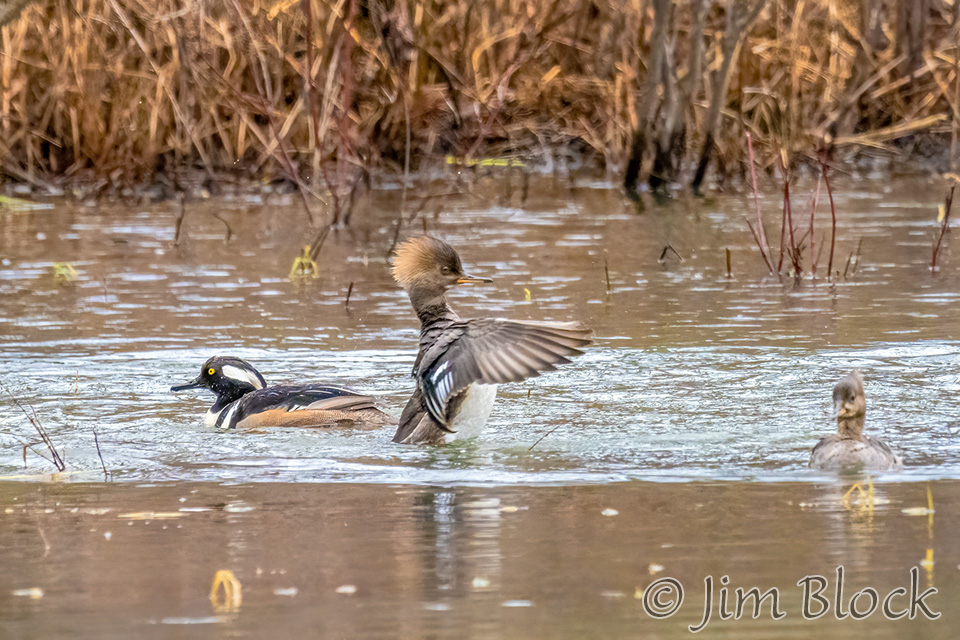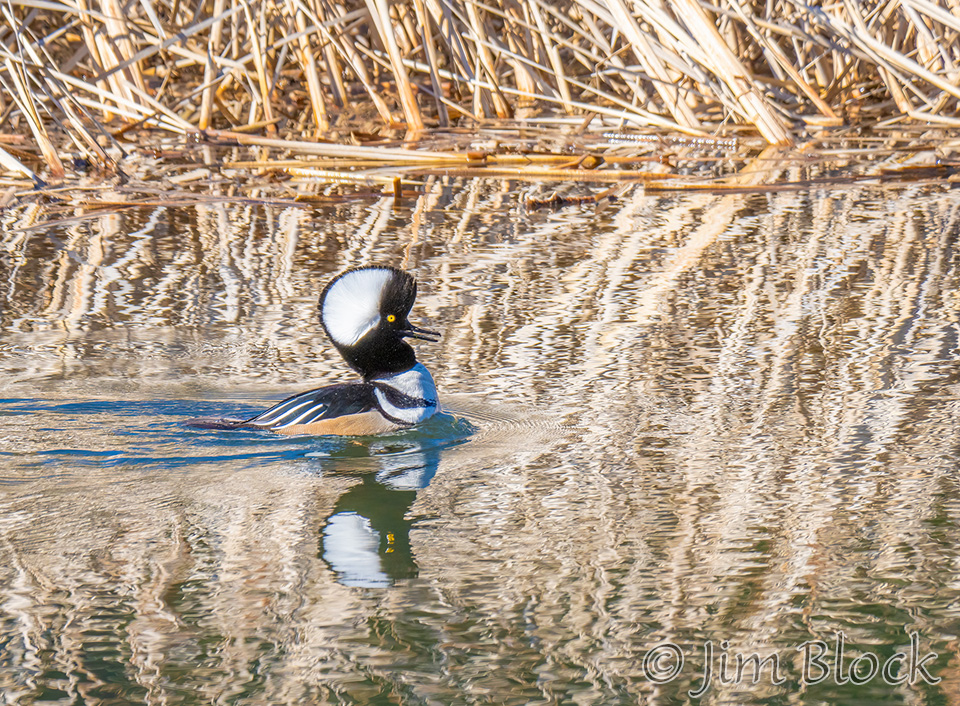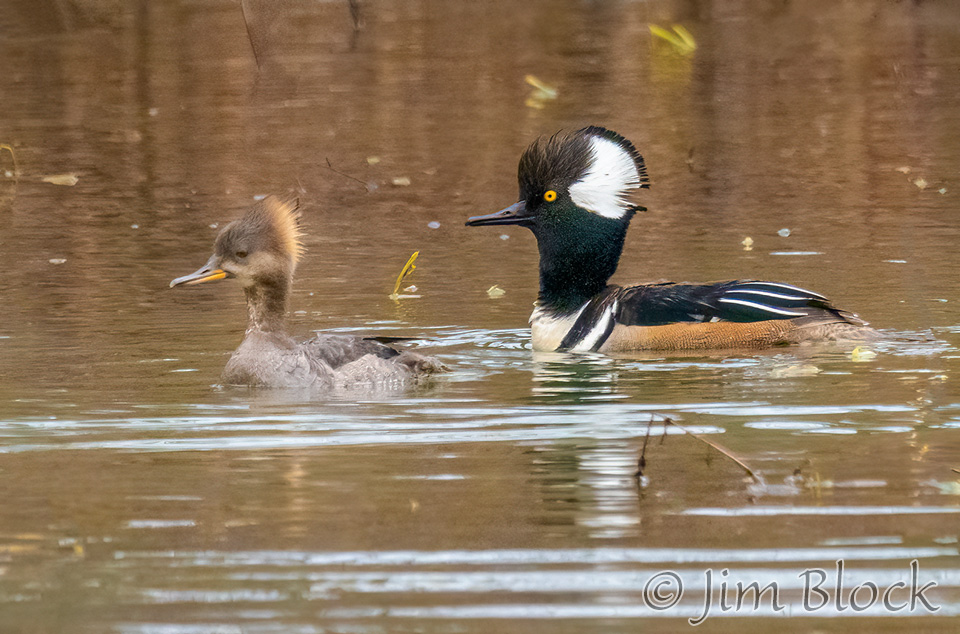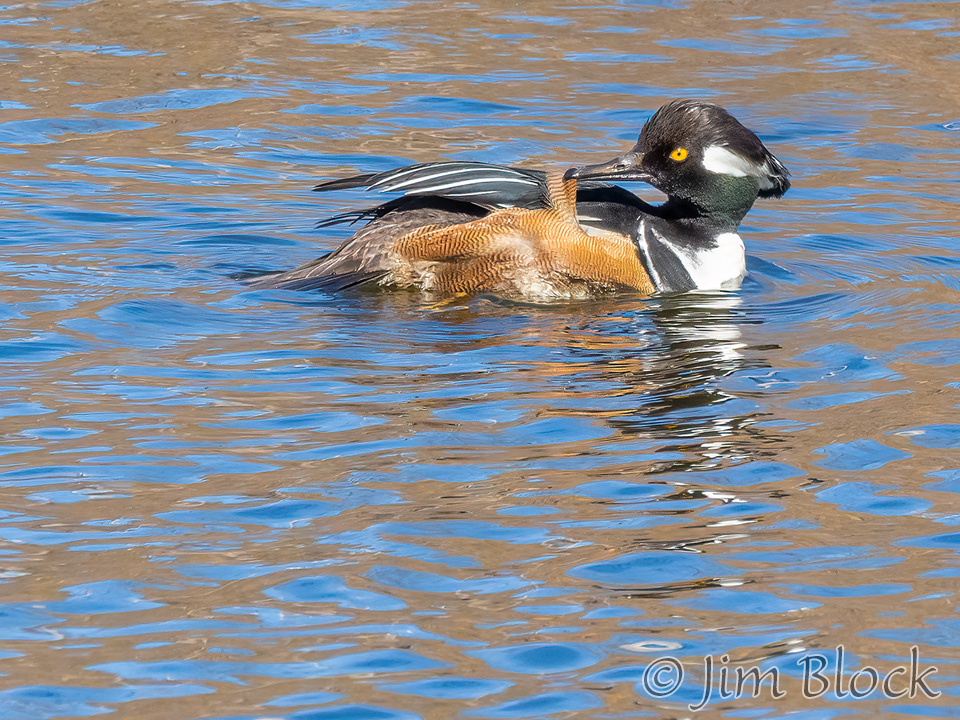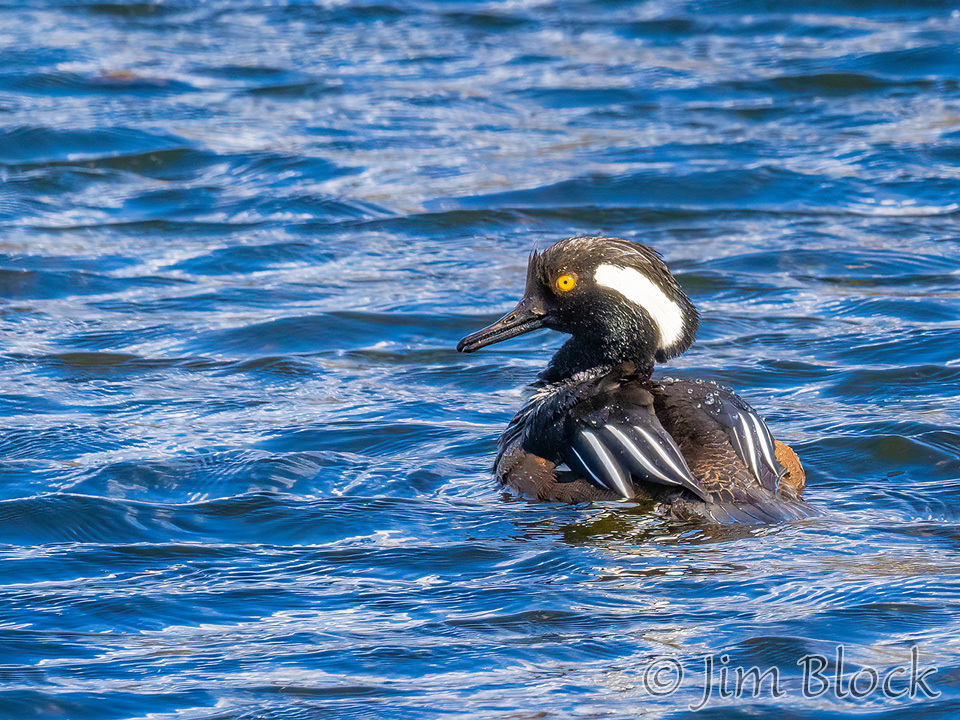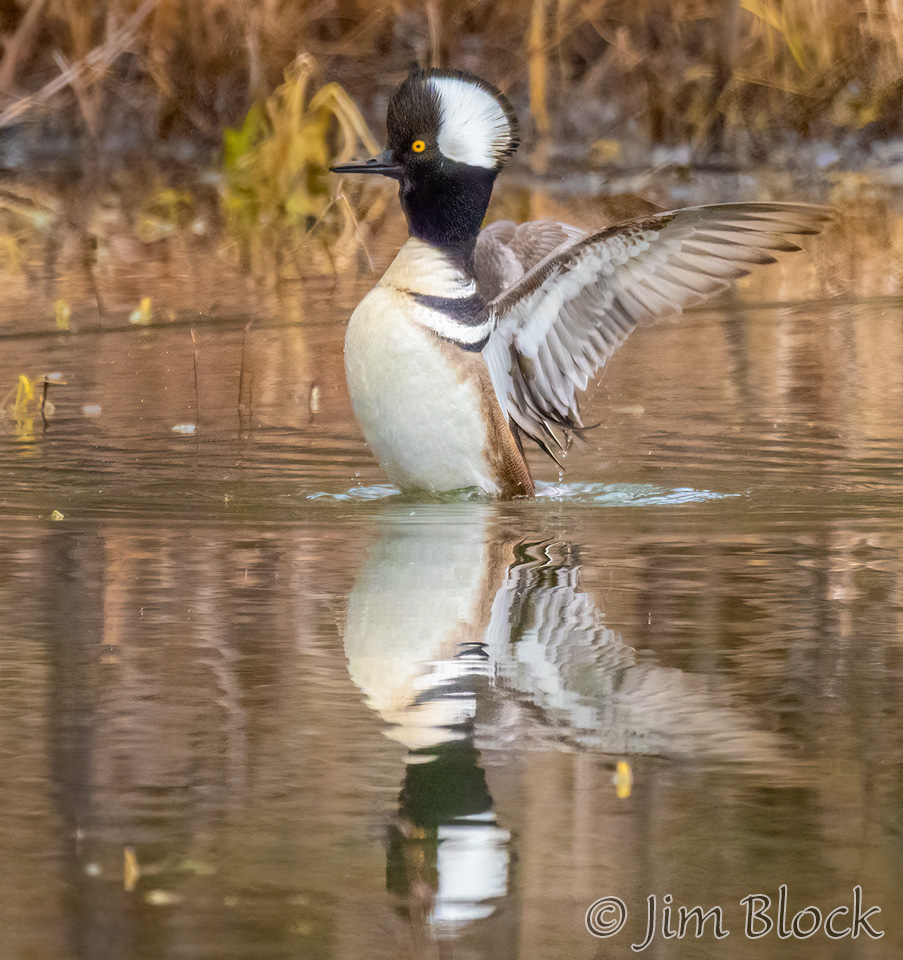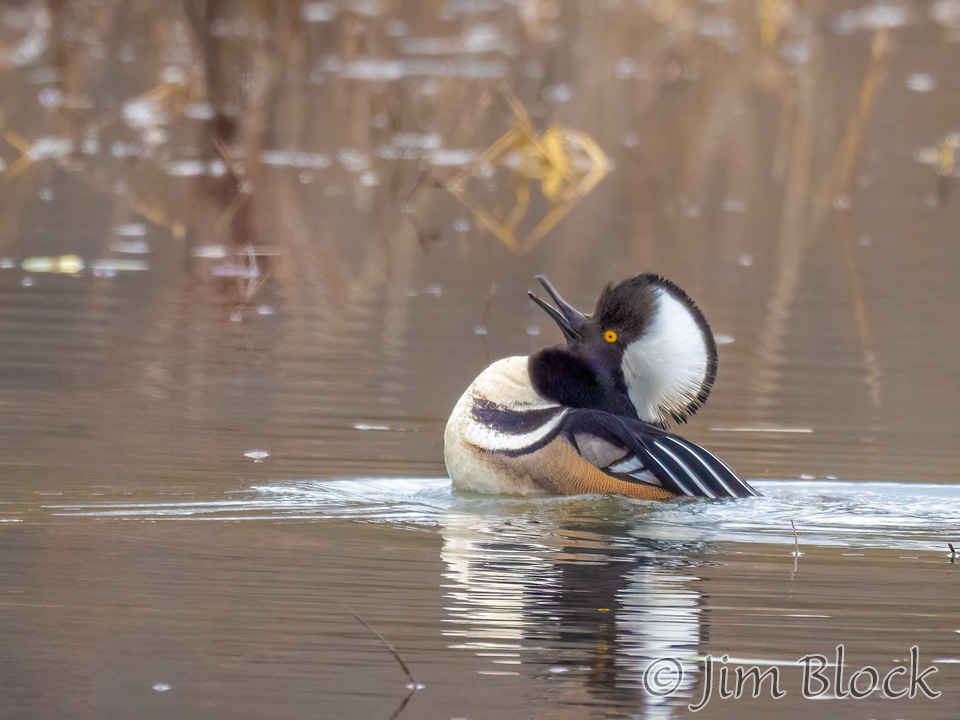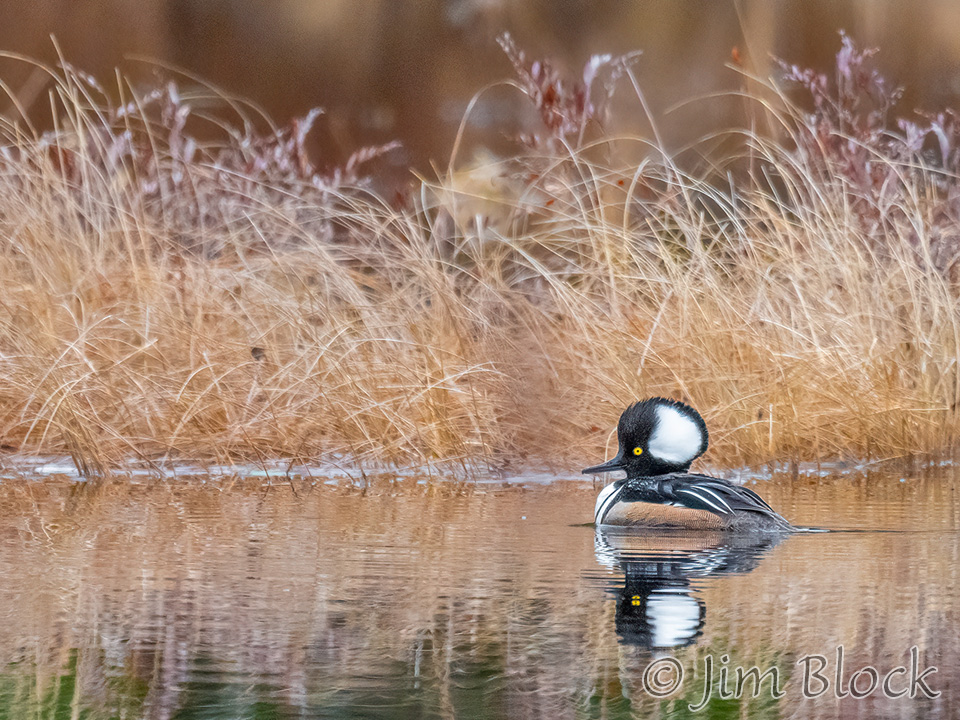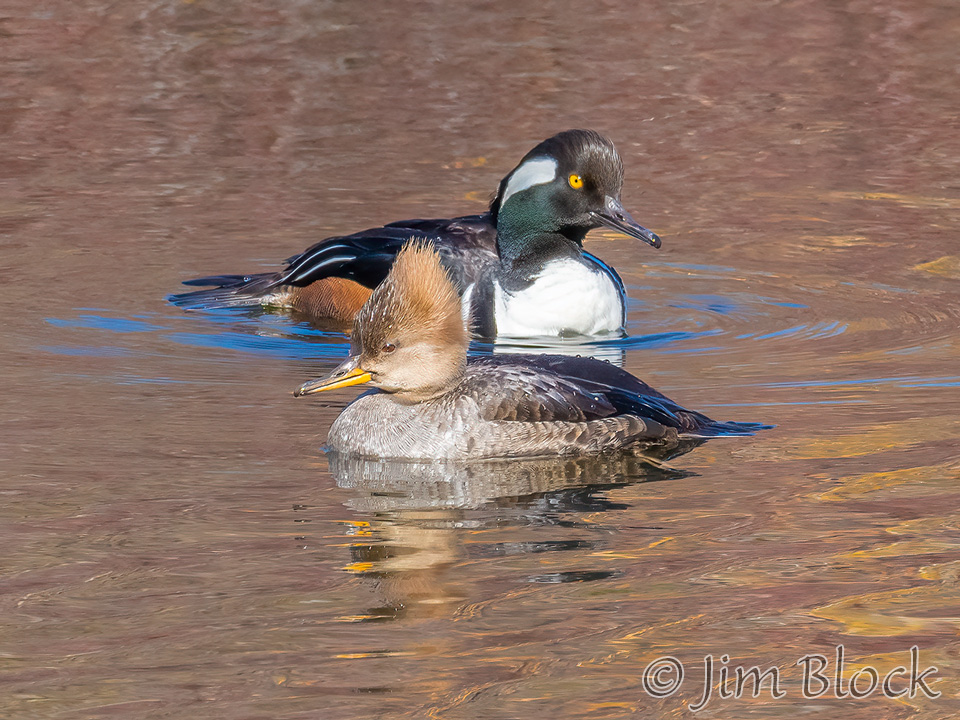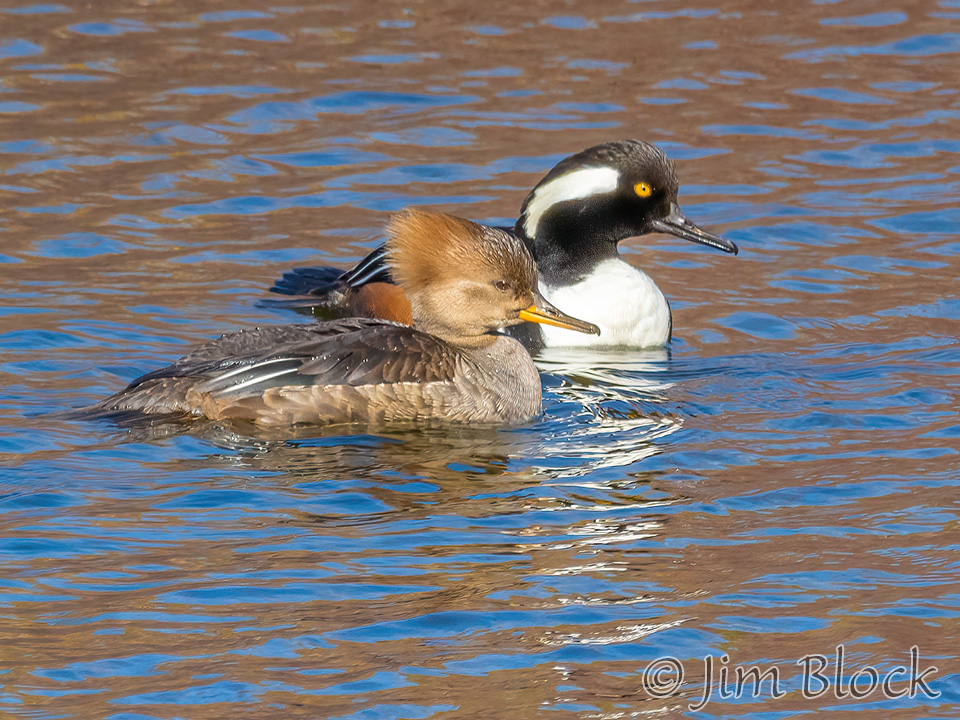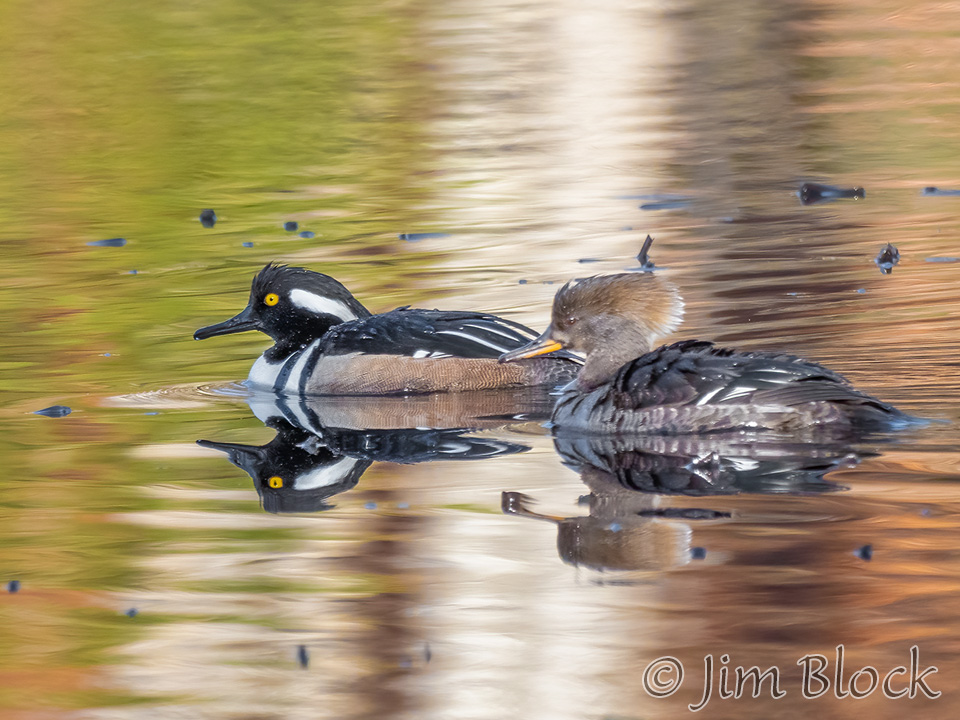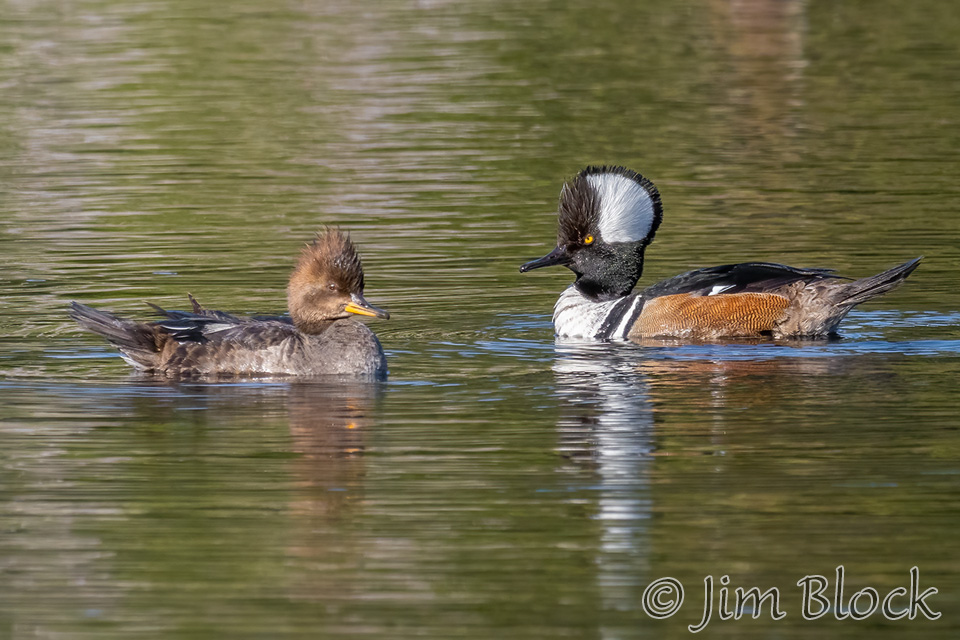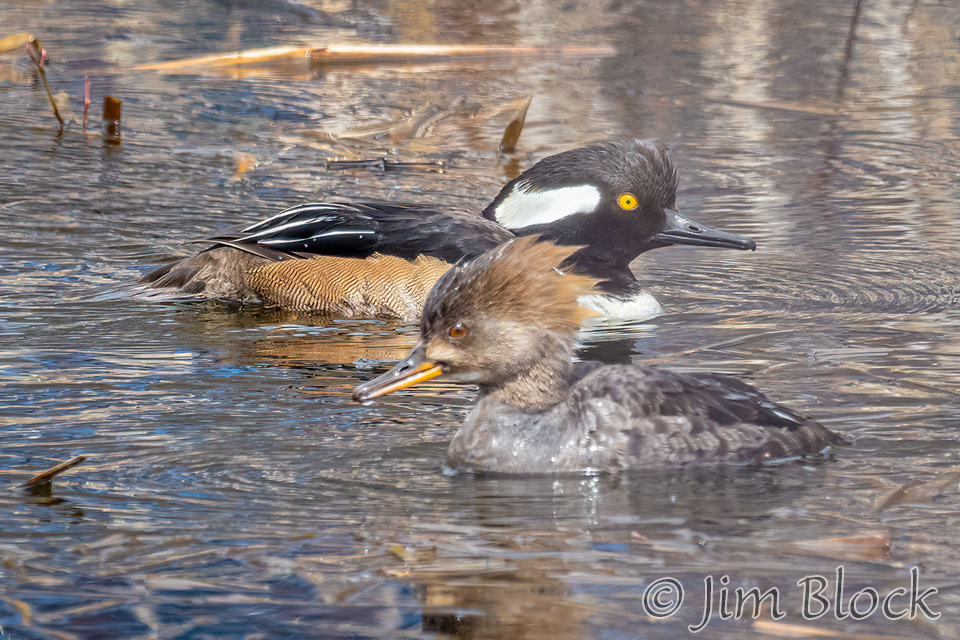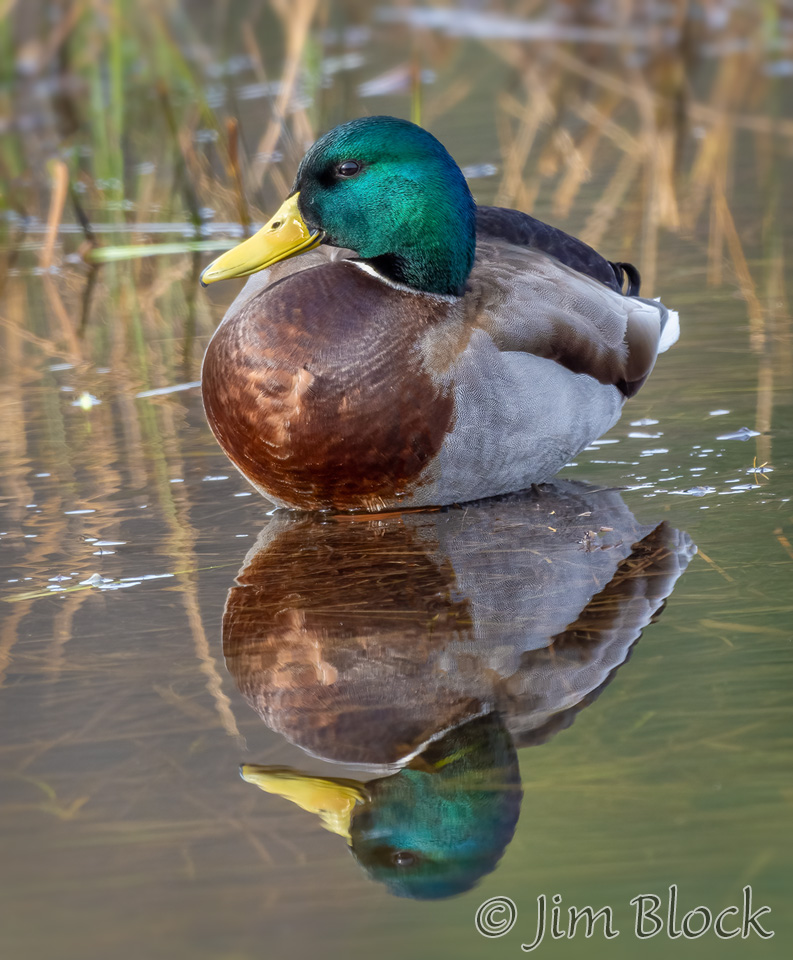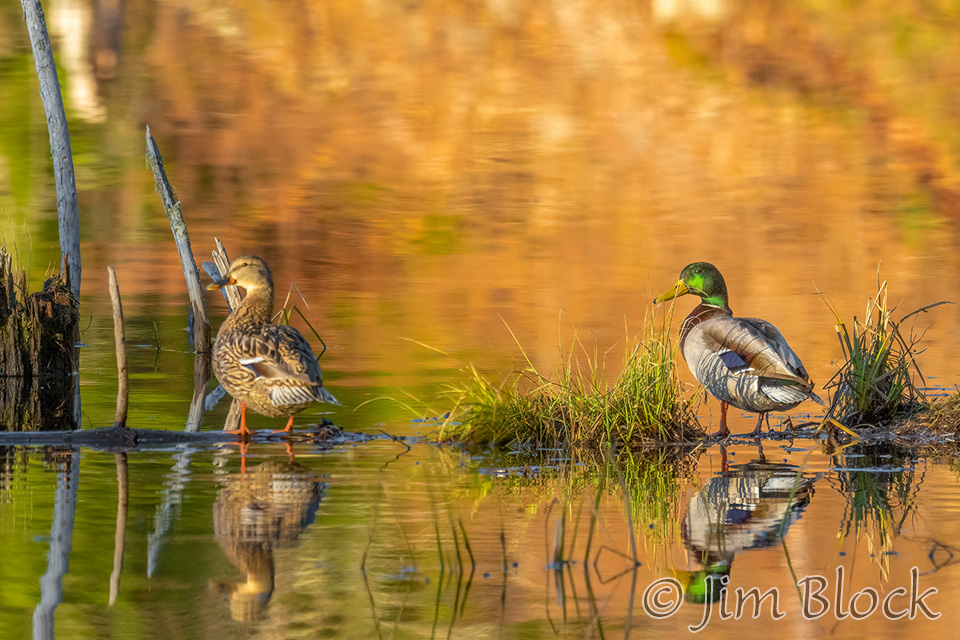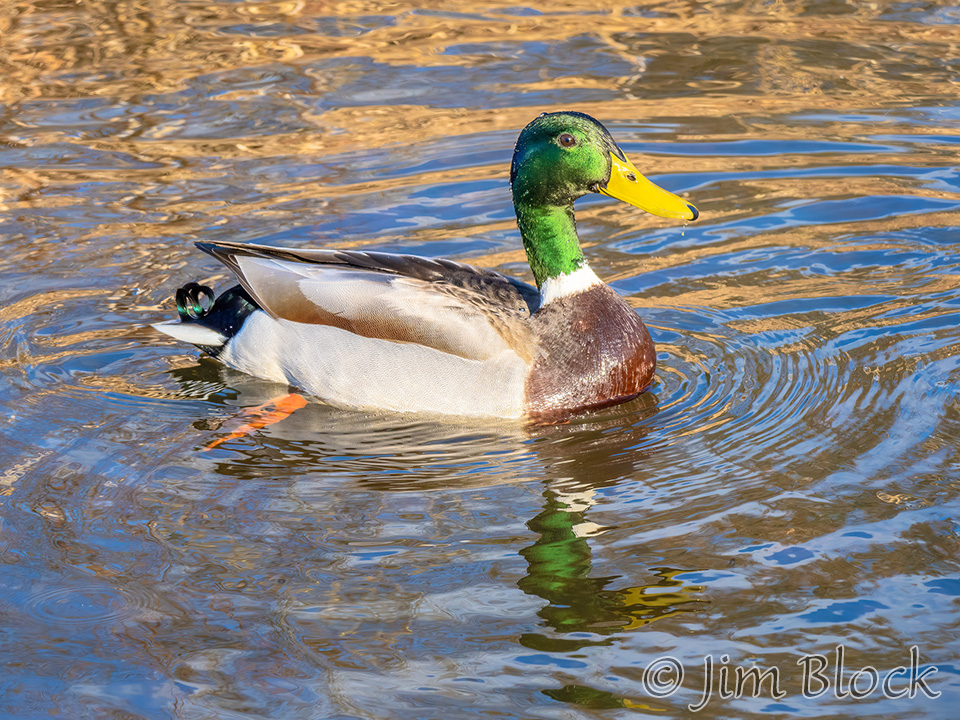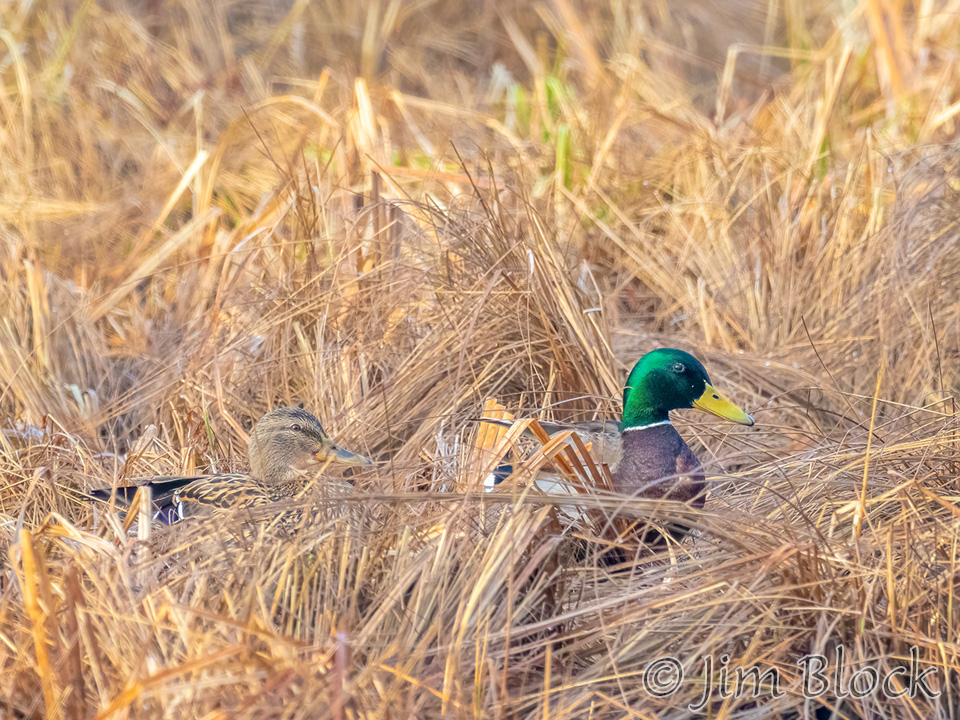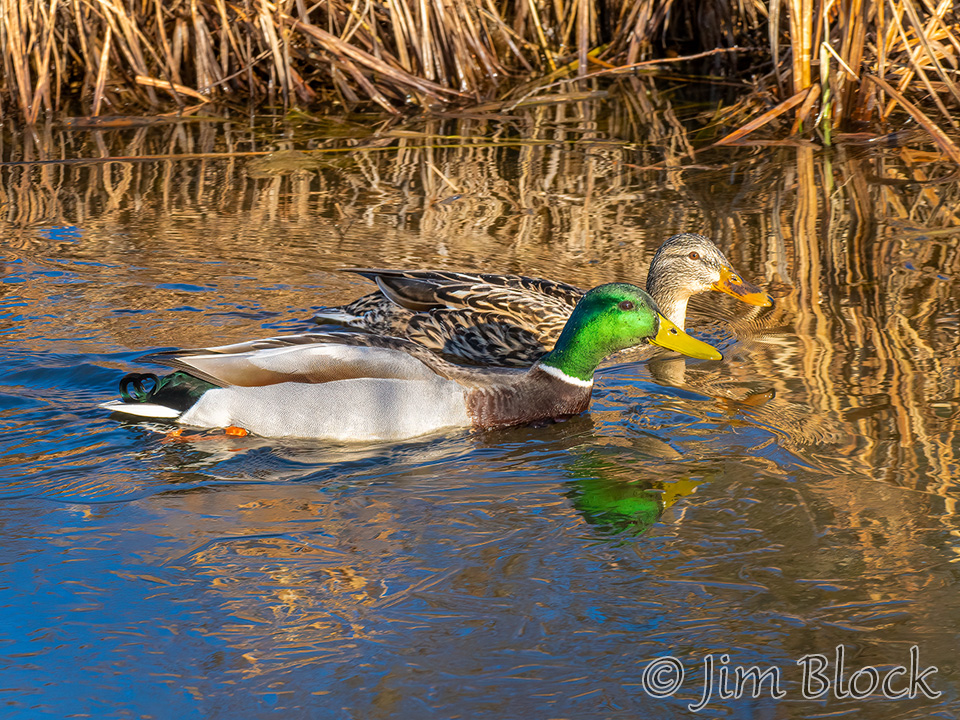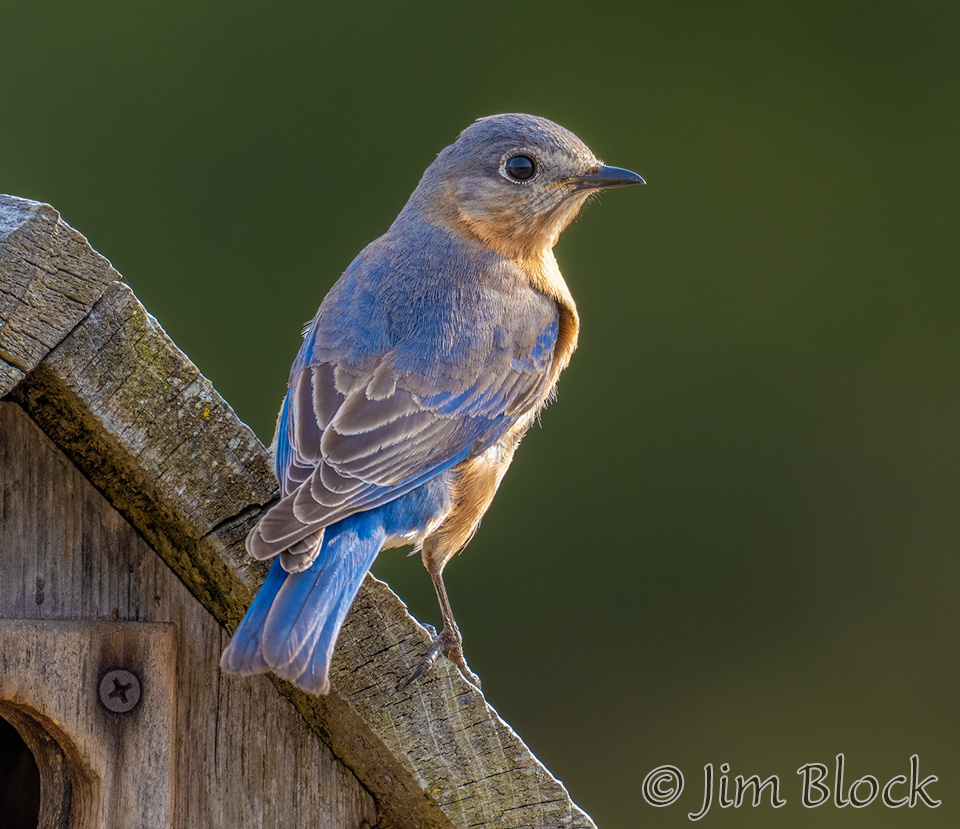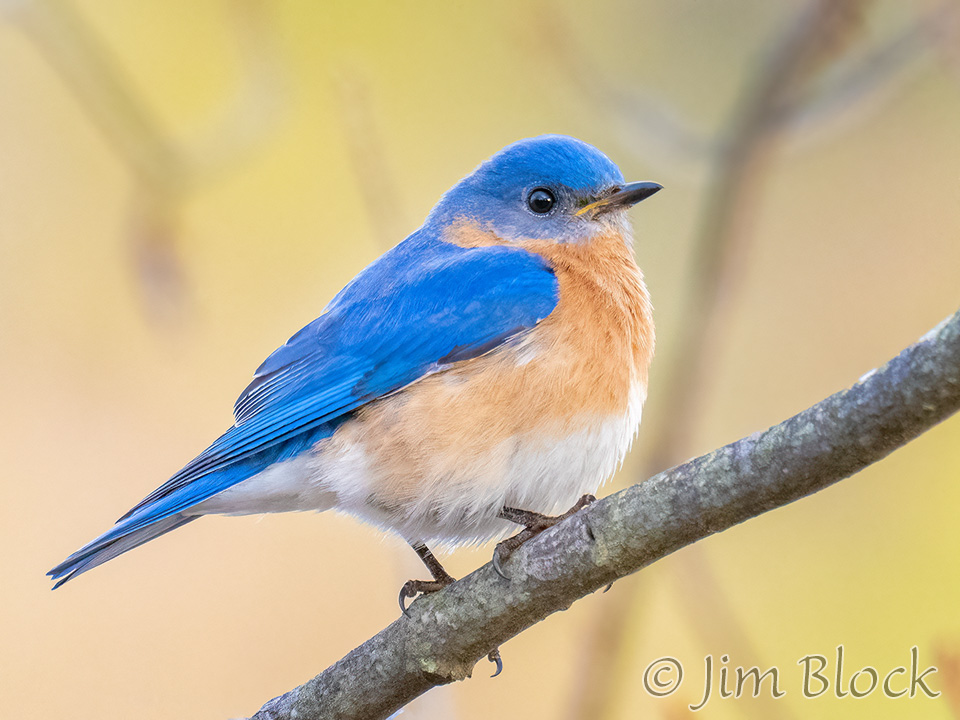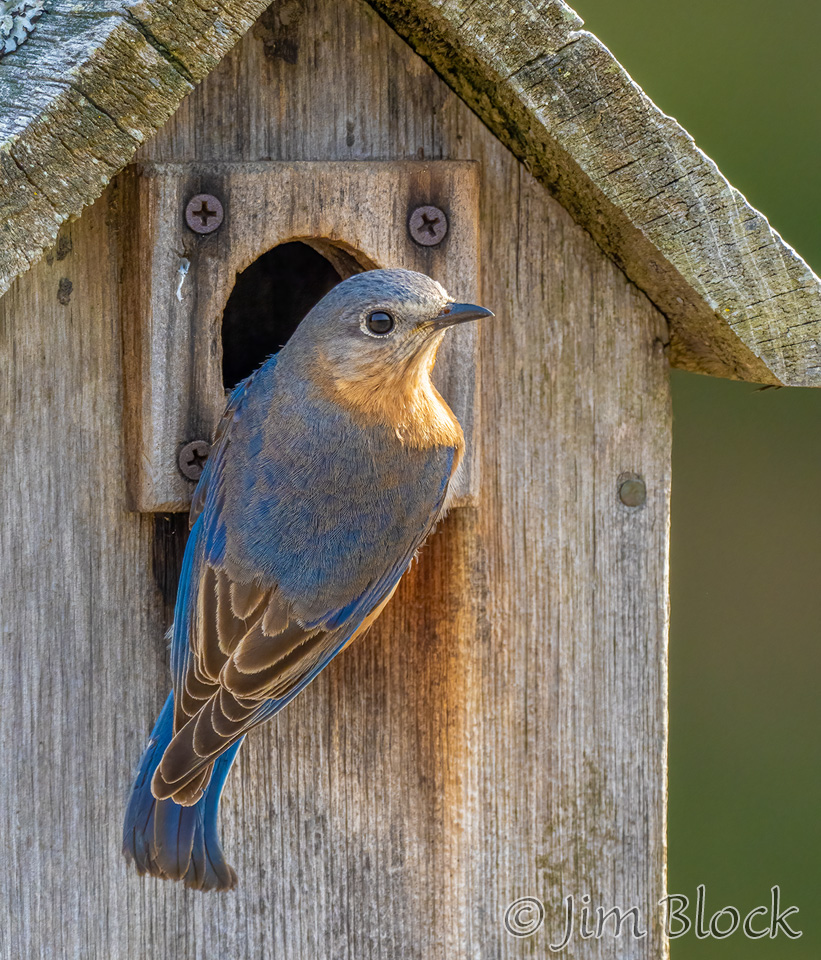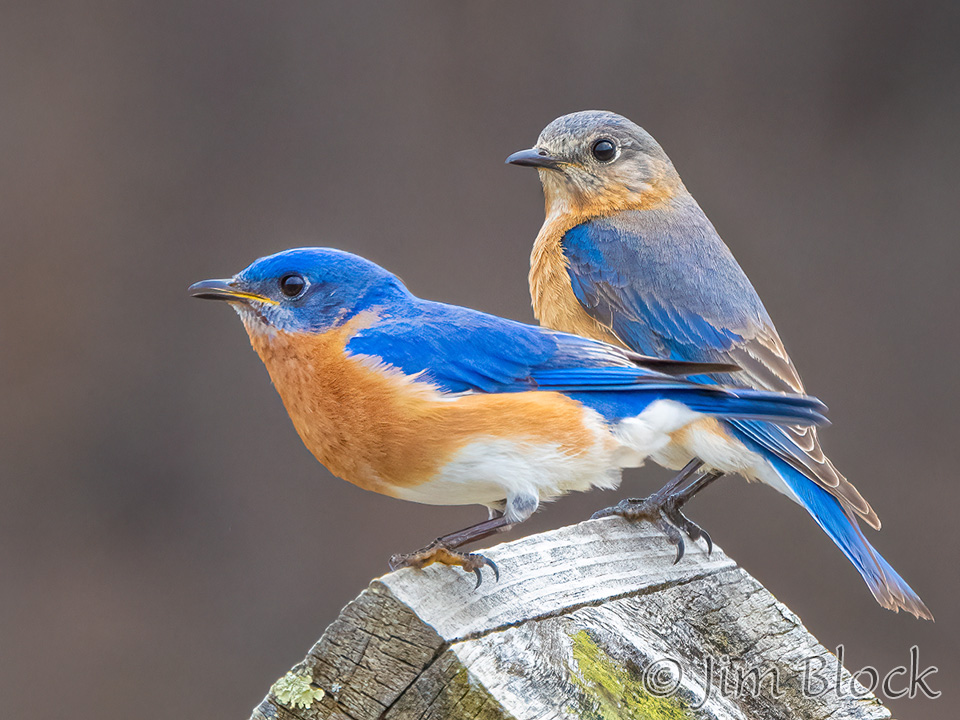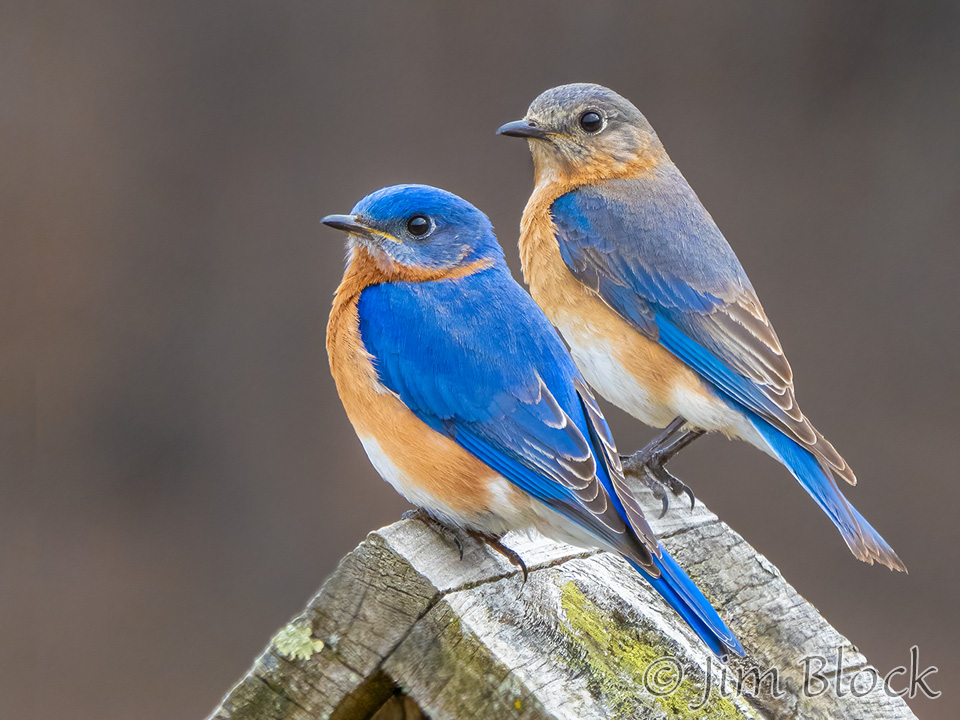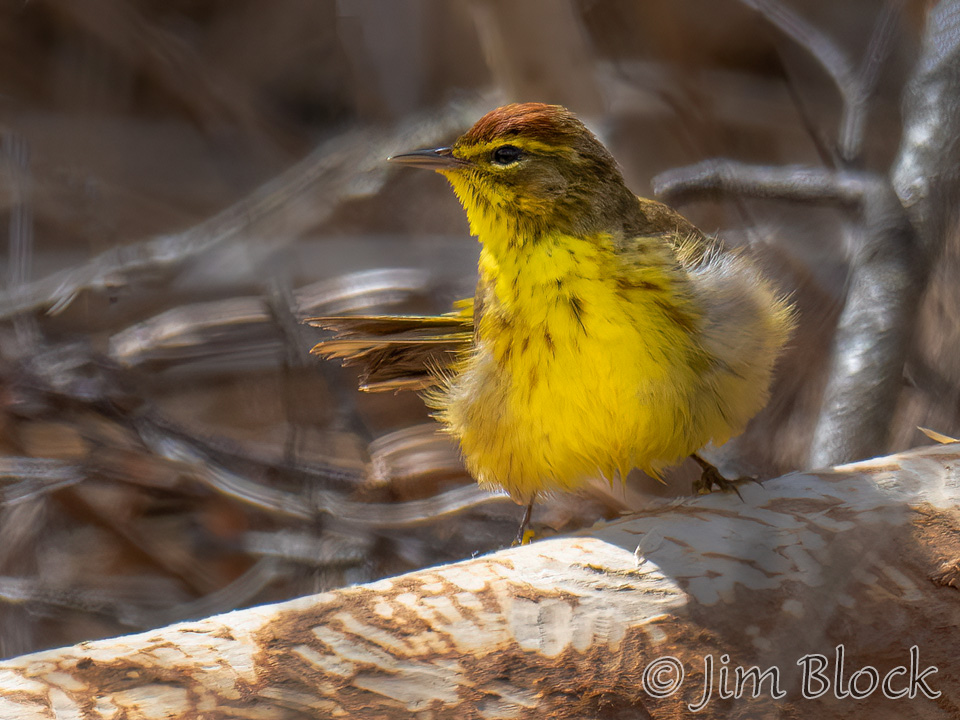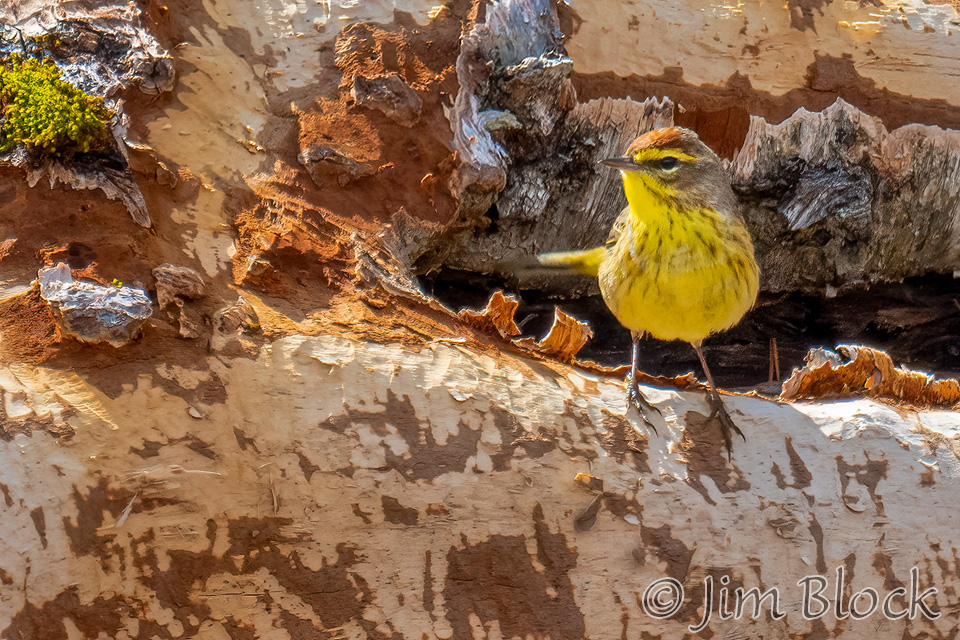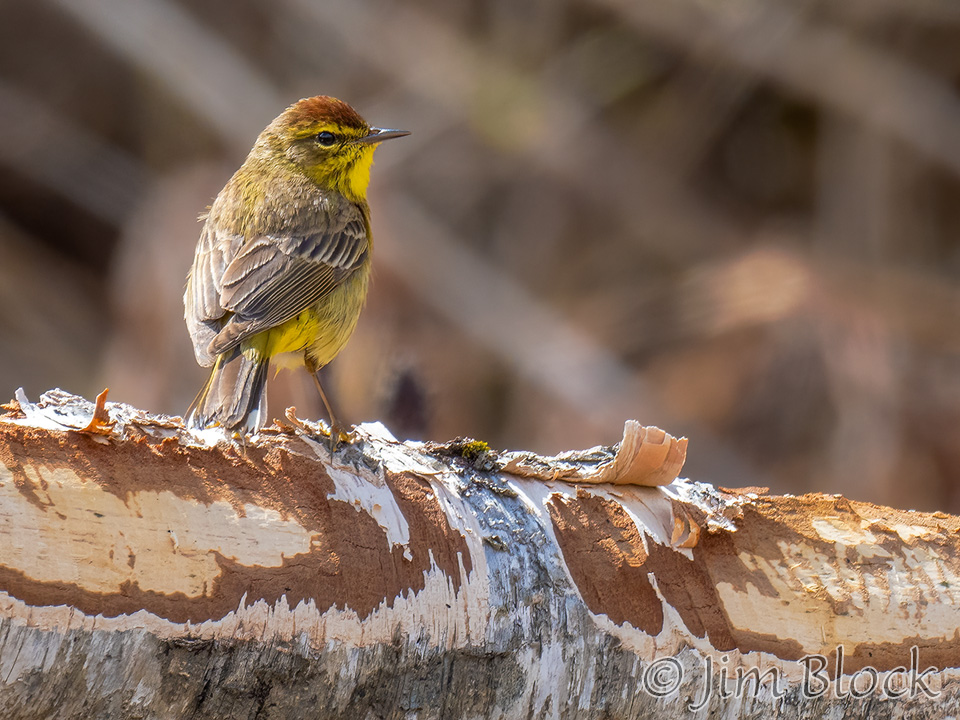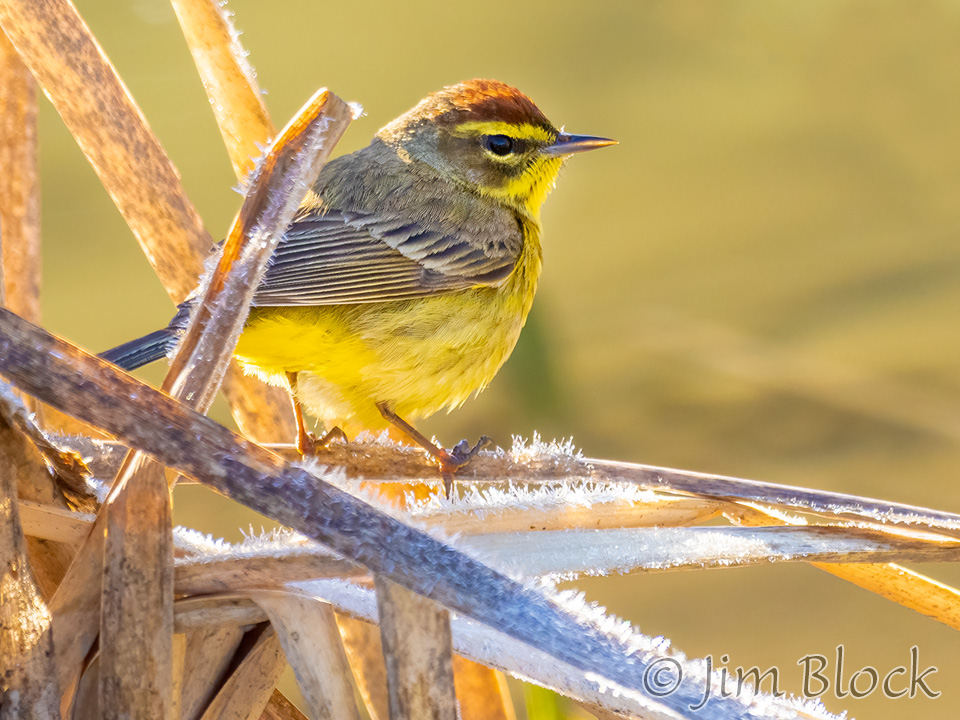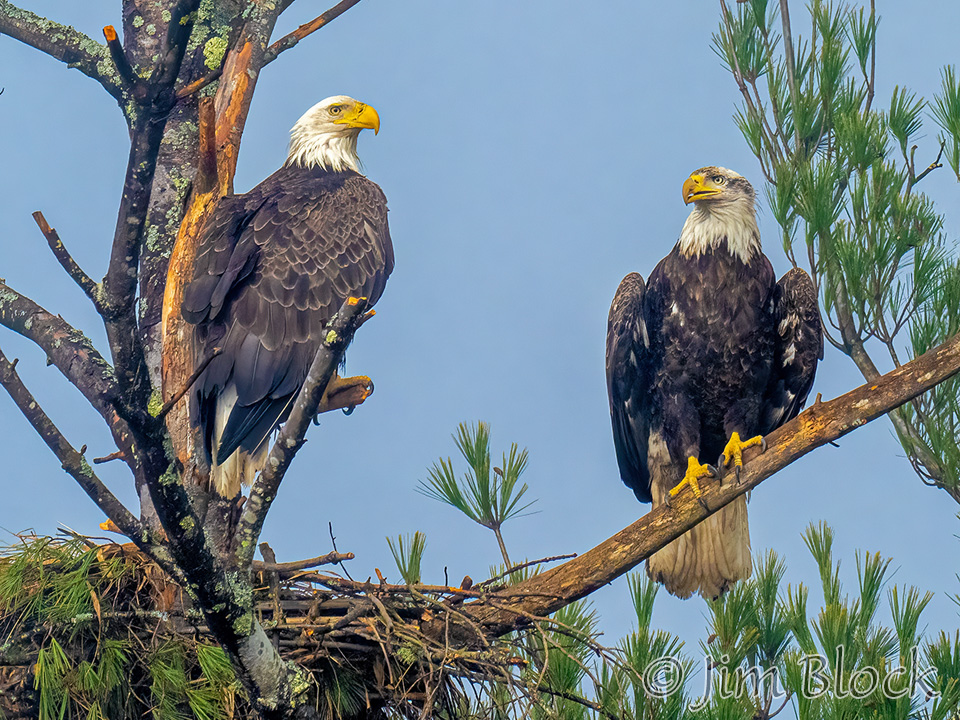
When I think of early spring birds, I think Red-winged Blackbirds, Wood Ducks, Hooded Mergansers, and Bald Eagles incubating eggs. I photographed these and more, but perhaps the biggest surprise was finding a new eagles’ nest in the Upper Valley that neither I nor Chris Martin of the NH Audubon knew about. Two eagles were filling it with sticks. But it is very late in the season, so maybe they were just planning ahead. It seems unlikely they will successfully fledge young this year.
The photos in this post were all taken in a two-week period in early April in Hanover, Lebanon, Enfield, Lyme, New London, Springfield, and Wilmot, NH and Norwich, VT.
Bald Eagles
I was looking down for ducks and did not notice an eagle flying past me until all I got were photos of its undertail coverts, what photographers refer to as “butt shots”. It landed where I could see and photograph it. I noticed a possible nest in the general area.
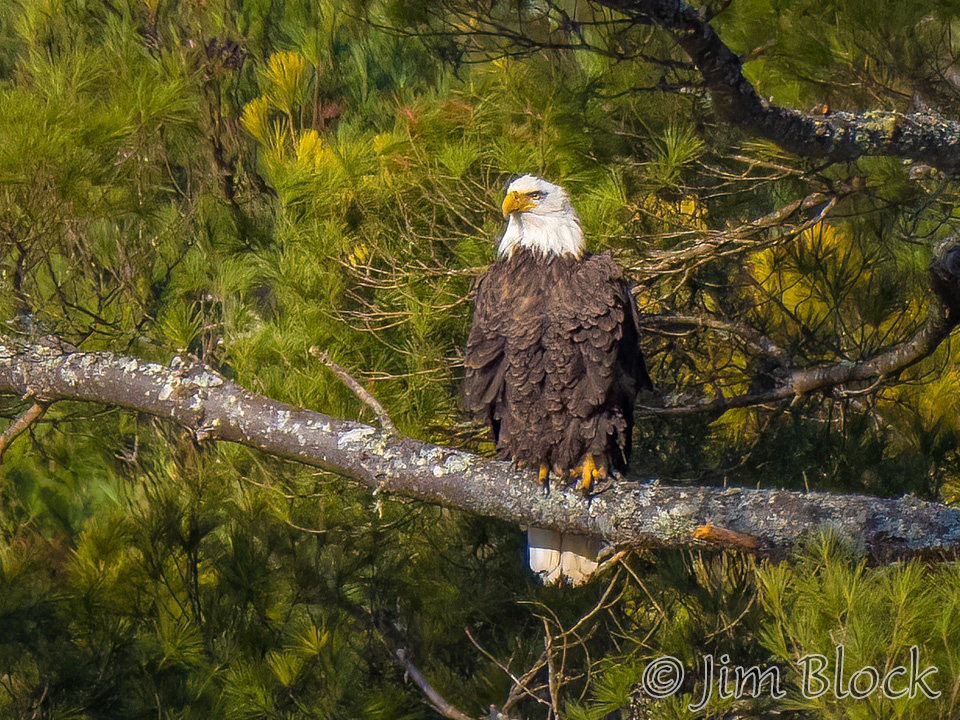
On another trip to the same spot, I found a Bald Eagle in sub-adult plumage sitting in a tree. Notice the black feathers on its head.
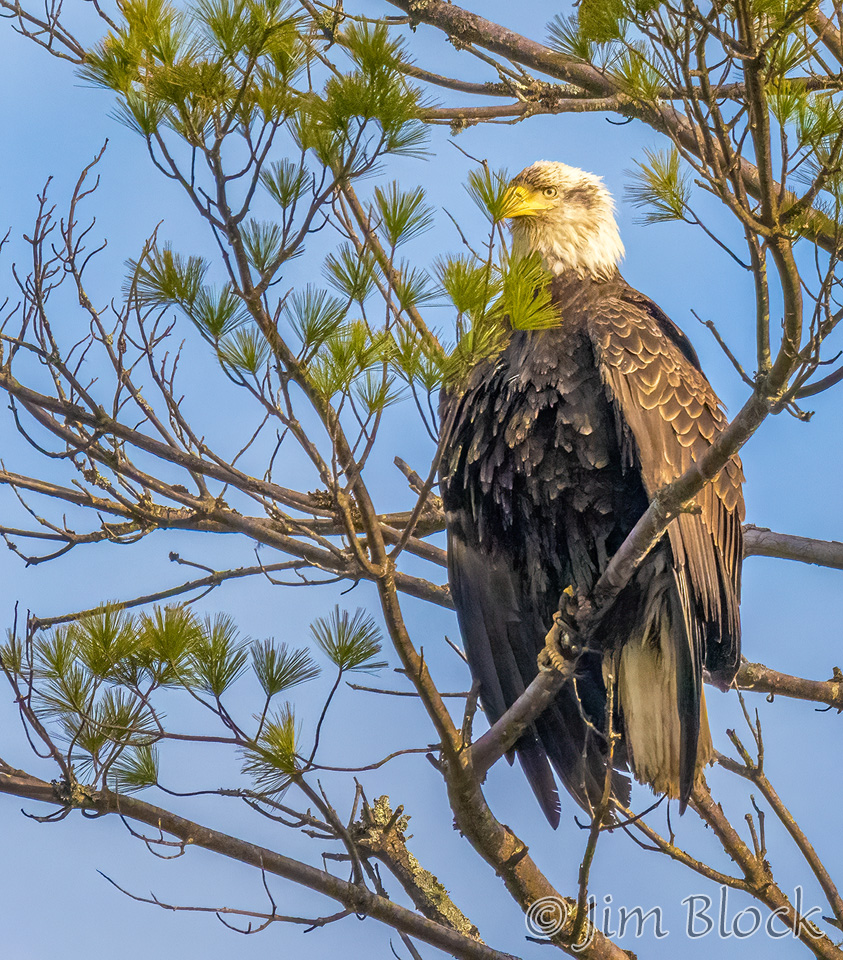
And then it flew.
The morning of my next visit was very foggy, so I did not expect much in the way of bird photography. I approached slowly and tried to stay mostly hidden behind some of the brush in the area. This time both eagles were present and they were in the nest! I took many photos over the next 36 minutes in spite of the fog.
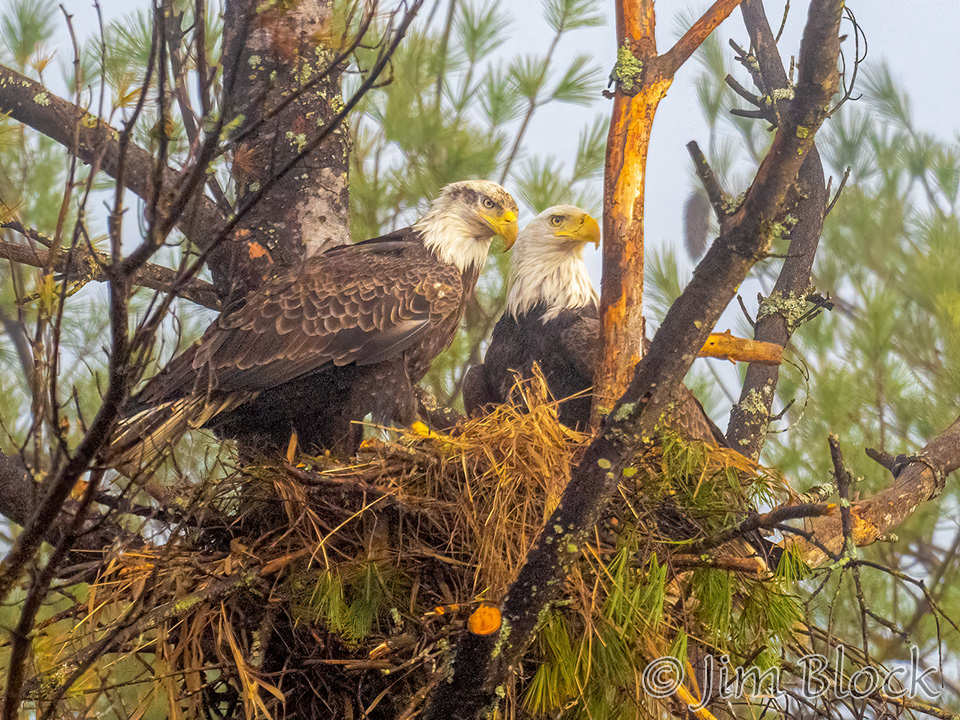
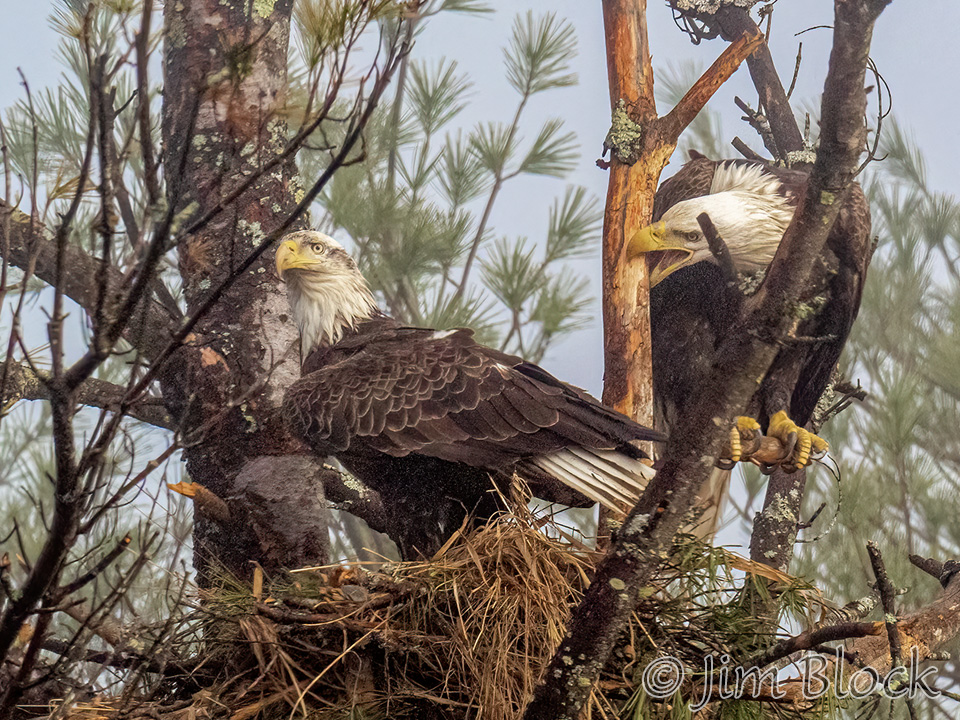
One would fly and return soon carrying a stick in its claws or bill. Does it make the decision by size of the stick or where it is when it picks it up?
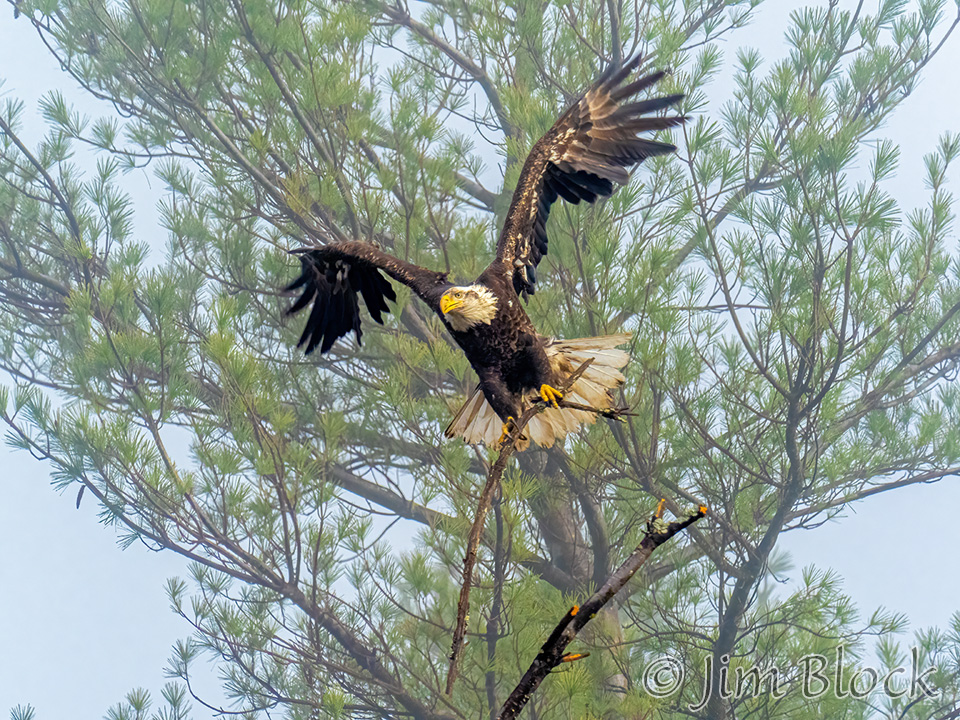
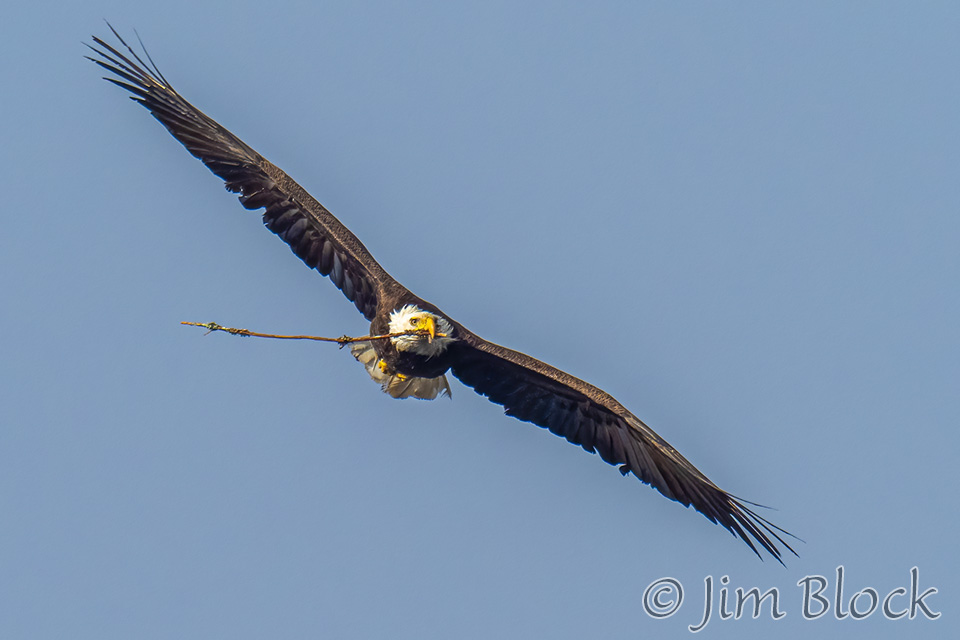
The eagles would spend many minutes fitting the stick into the nest structure. I saw it drop one.
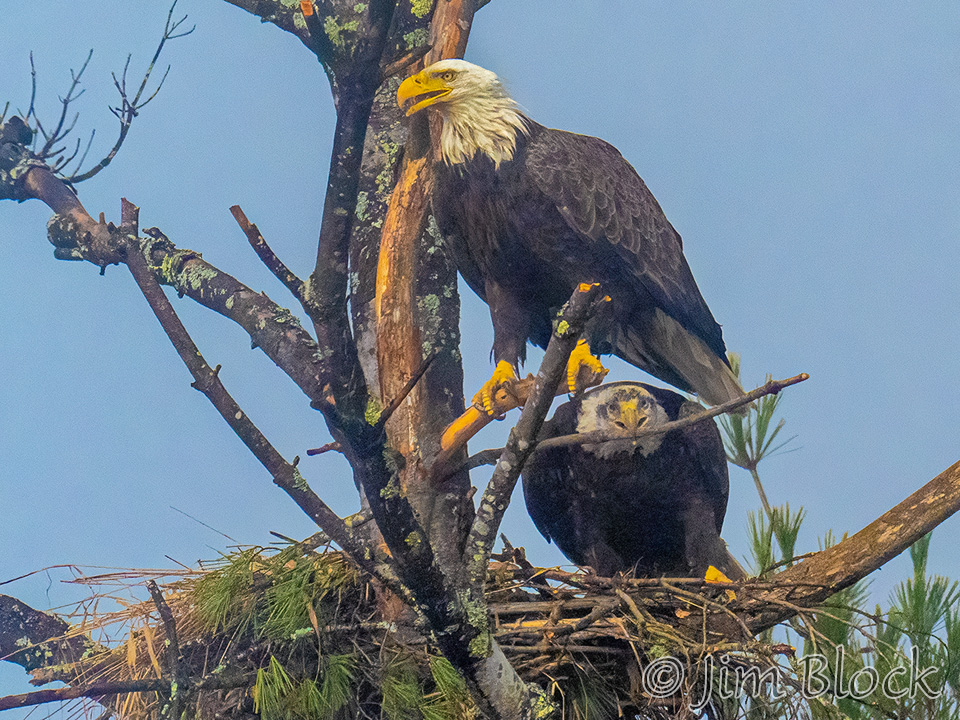
A very brief afternoon stop found the pair in the nest again.
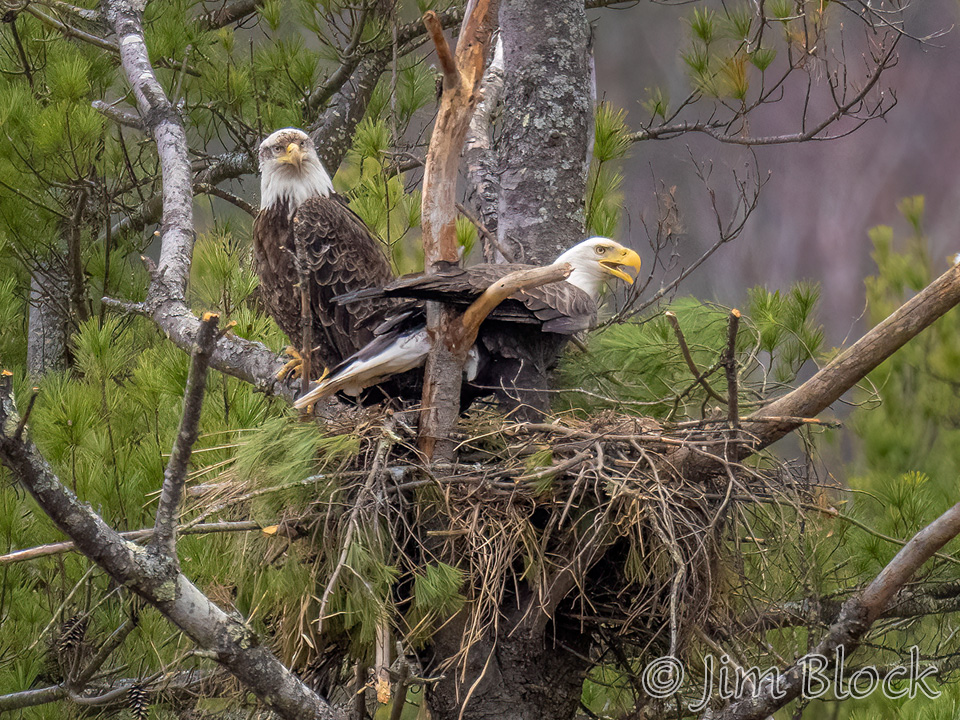
It was cold but sunny very early another morning. The nest was empty, but the younger eagle was enjoying the sun from a nearby tree.
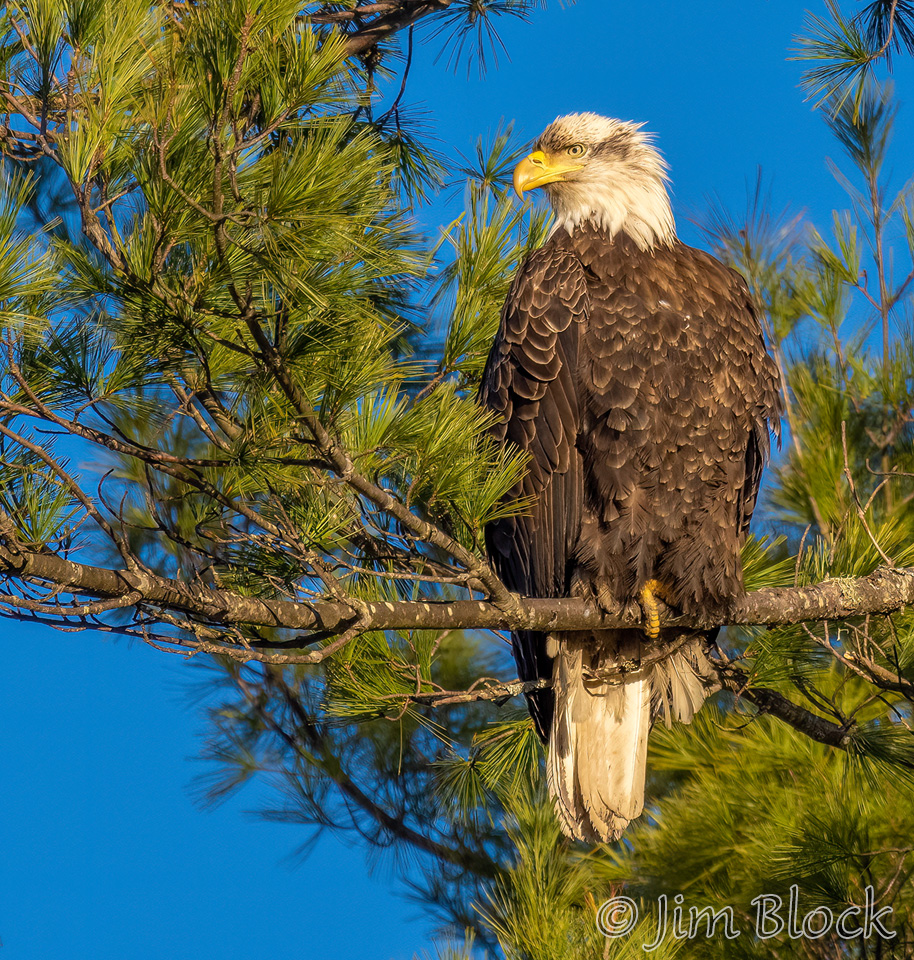
Wood Ducks
I reluctantly left the eagles and found some Wood Ducks feeding in a flooded field. They were mostly behind foliage, so I approached slowly and sat on the ground. It is not often one can spend any amount of time with these very skittish ducks, but I was with them for over 45 minutes. Much of the time they were hidden, but there were brief moments when I could get fairly clean shots. Here are some of the photos I took while they swam back and forth.
And then they mated. Fortunately they did so in a spot that did not have weeds obstructing my view. Shortly after mating the ducks climbed into brush and disappeared from sight.
Wood Ducks will fly to trees for protection or to roost. Here is one in a tree in the early morning sun.
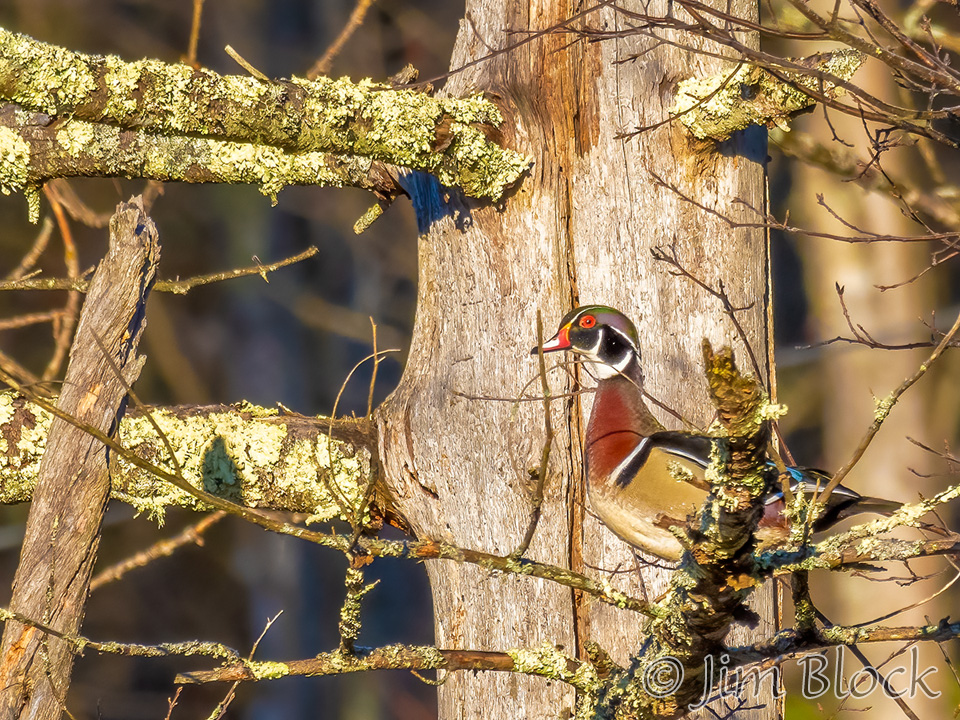
Below are other photos of Wood Ducks I took this April.
Hooded Merganser
Almost all of the photos I took of Wood Ducks were on cloudy or foggy mornings. But I did get some Hooded Mergansers in the sun. Here is a male courting a female.
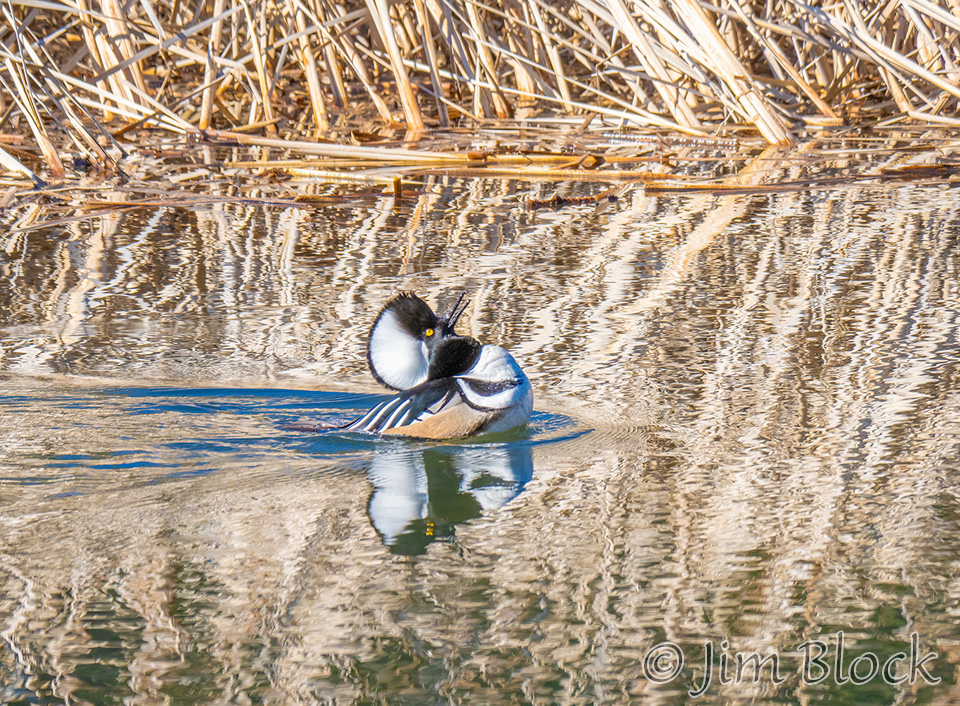
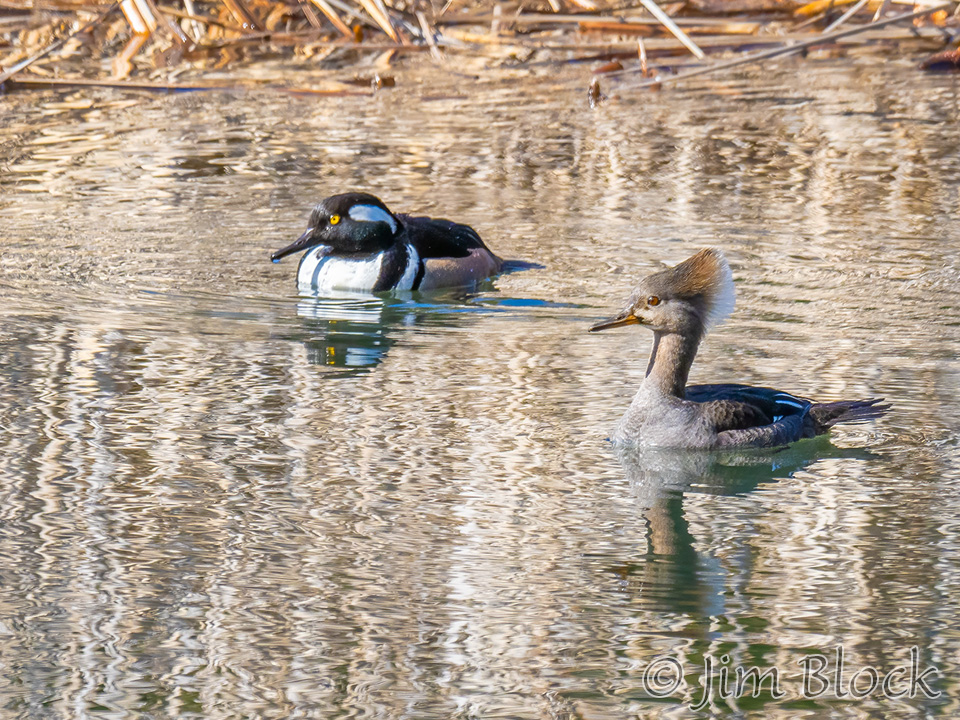
In the flooded field at Campbell Flat, one did a take-off run straight at me.
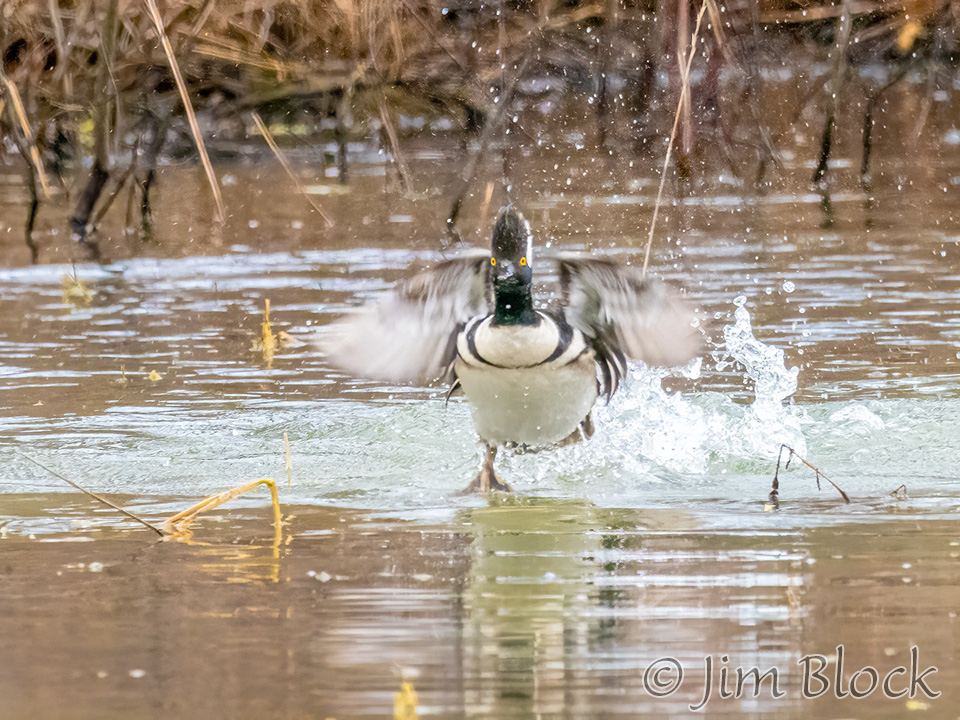
Seconds later he landed creating a nice bow wake.
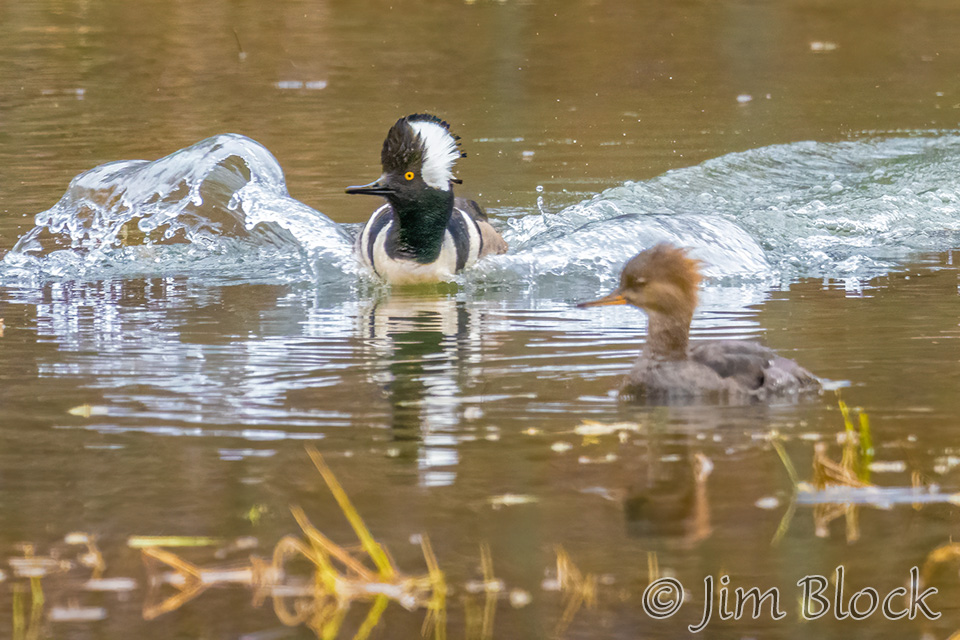
But then he almost immediately took flight again. The Image below is a composite of three photos of the same bird as he turned and launched.
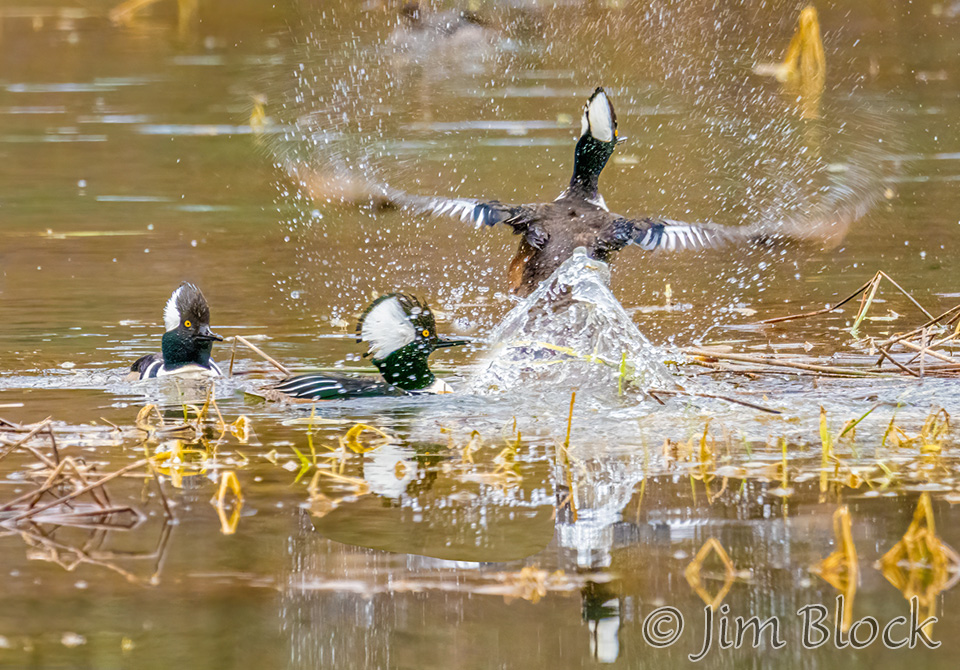
Sometimes the photo is more about the reflections than the duck.
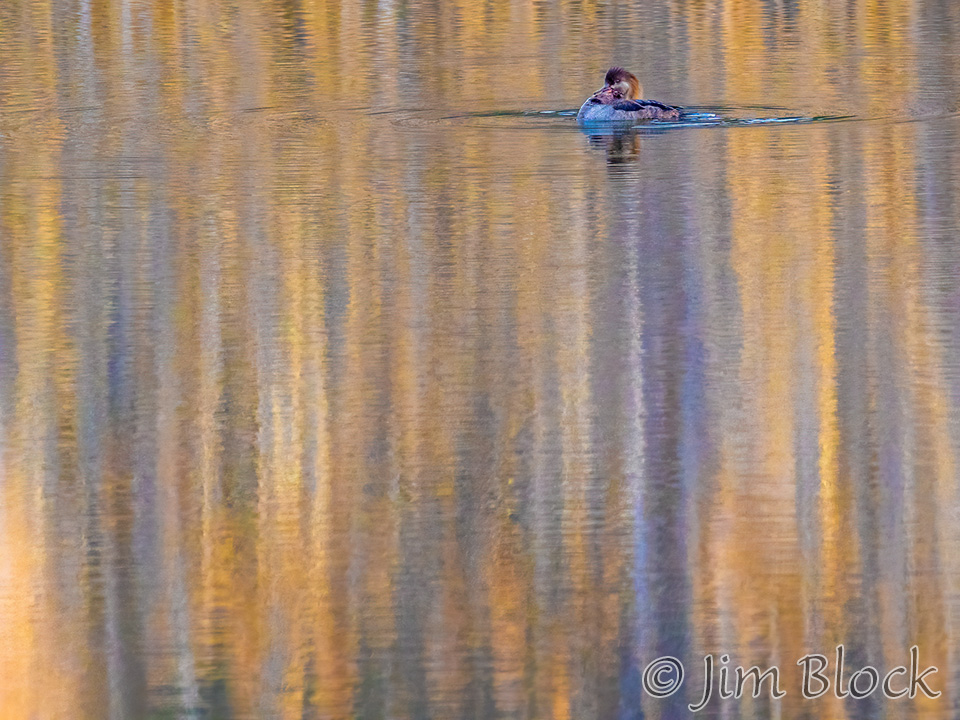
Below are more photos of this beautiful, and fairly common, duck of spring.
Common Merganser
Somewhat less common in spring than the hooded is the Common Merganser. But they seem more common during the summer. Below is a pair that seemed to be babysitting a female Wood Duck in the early morning fog.
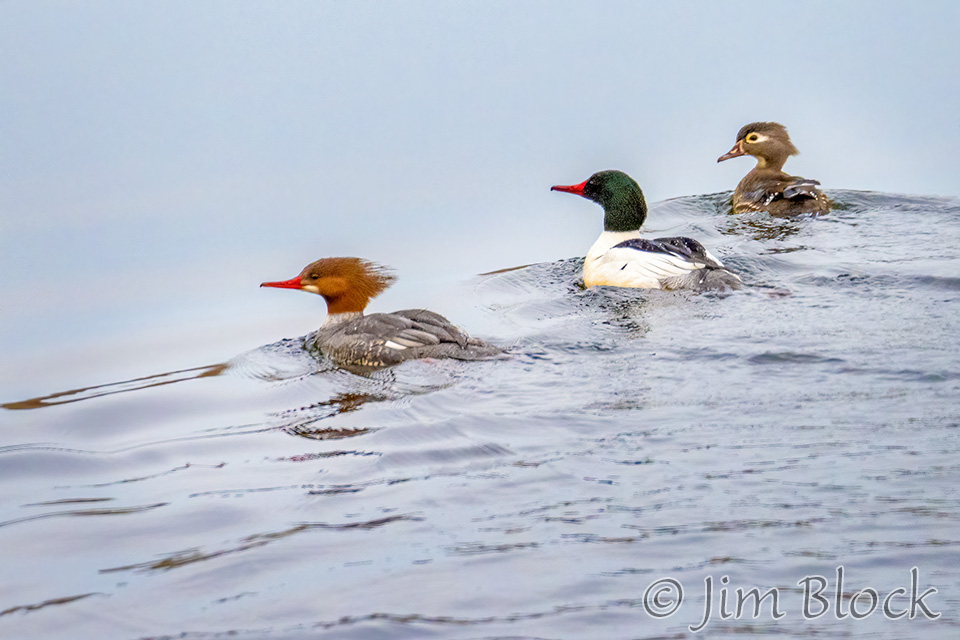
Here are two more photos of Common Merganser.
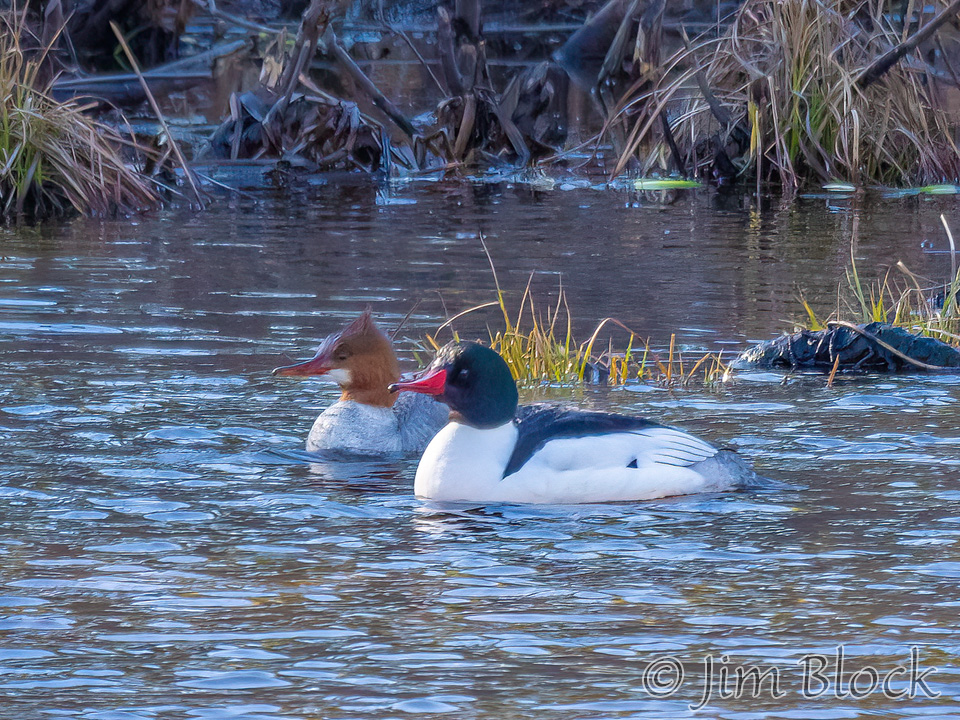
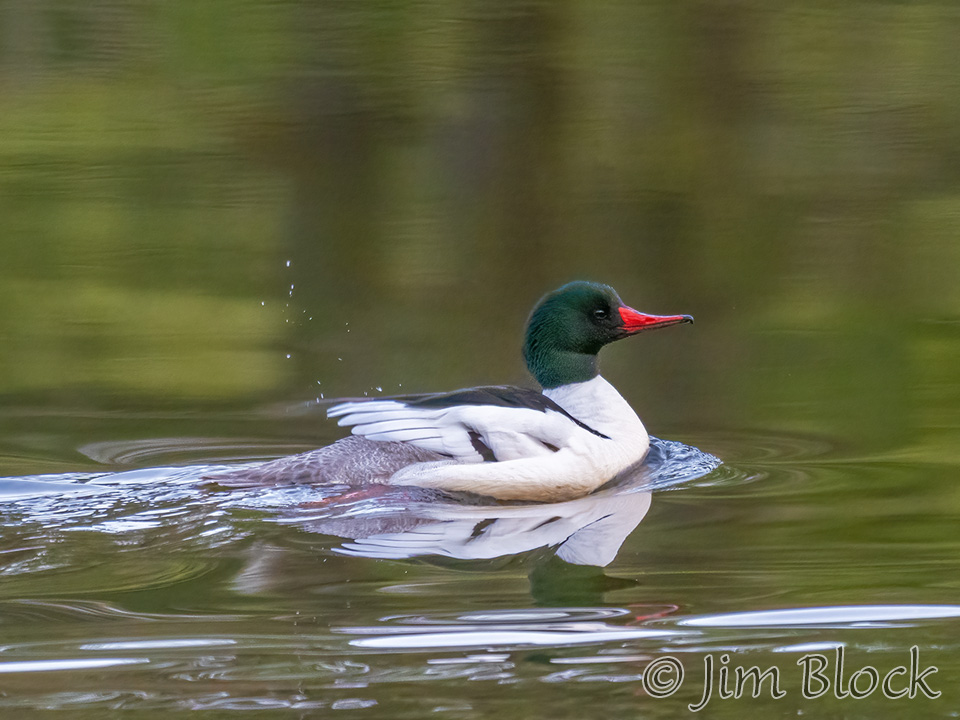
Buffleheads
Buffleheads are somewhat rare. I consider them ocean ducks, but they do get to this area. I photographed some from a very long distance across a pond. The male is very colorful in the right light.
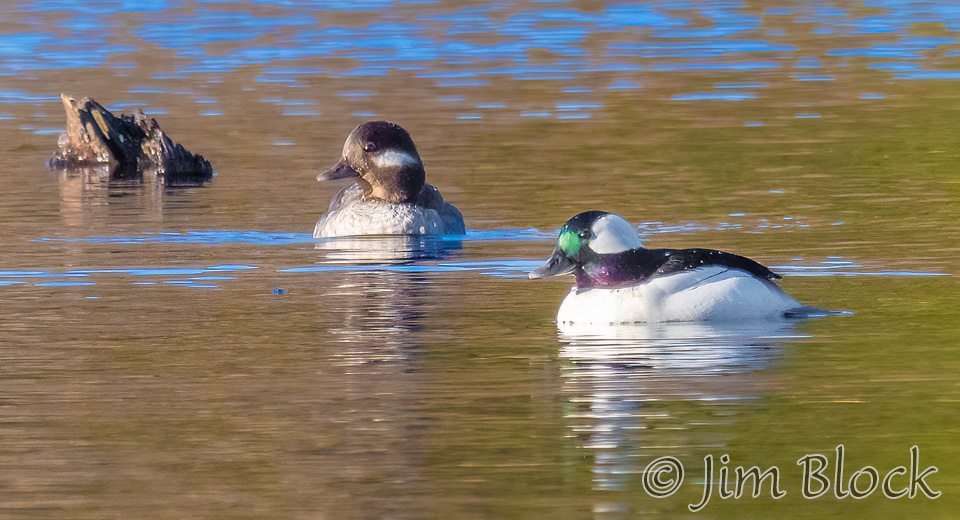
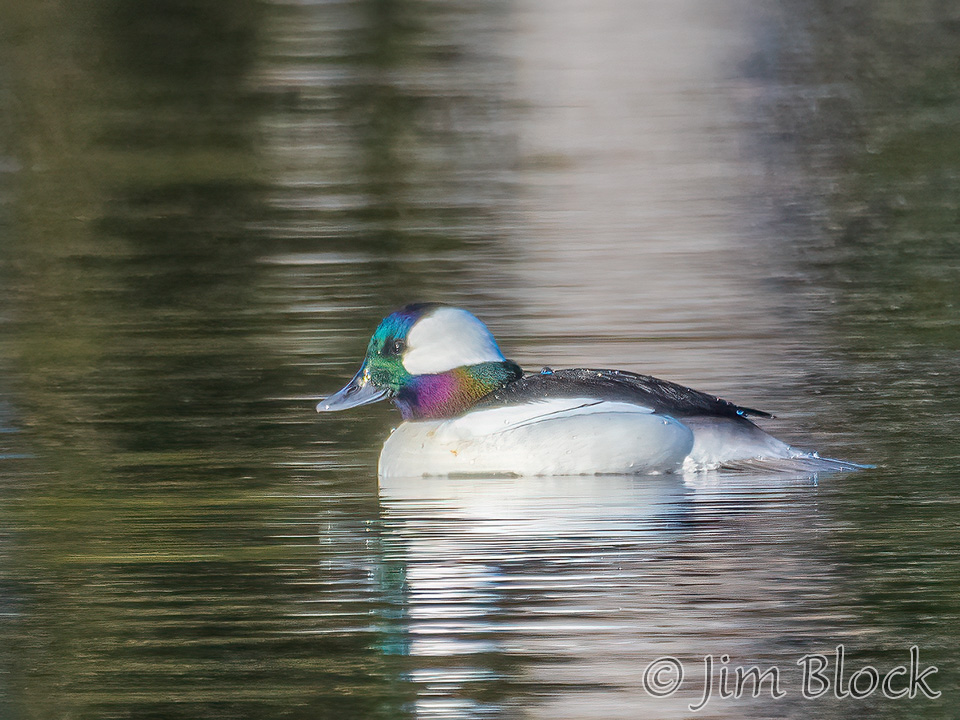
Ring-necked Ducks
Ring-necked Ducks are another species seen mostly in spring in the Upper Valley. Here are photos from three different NH towns.
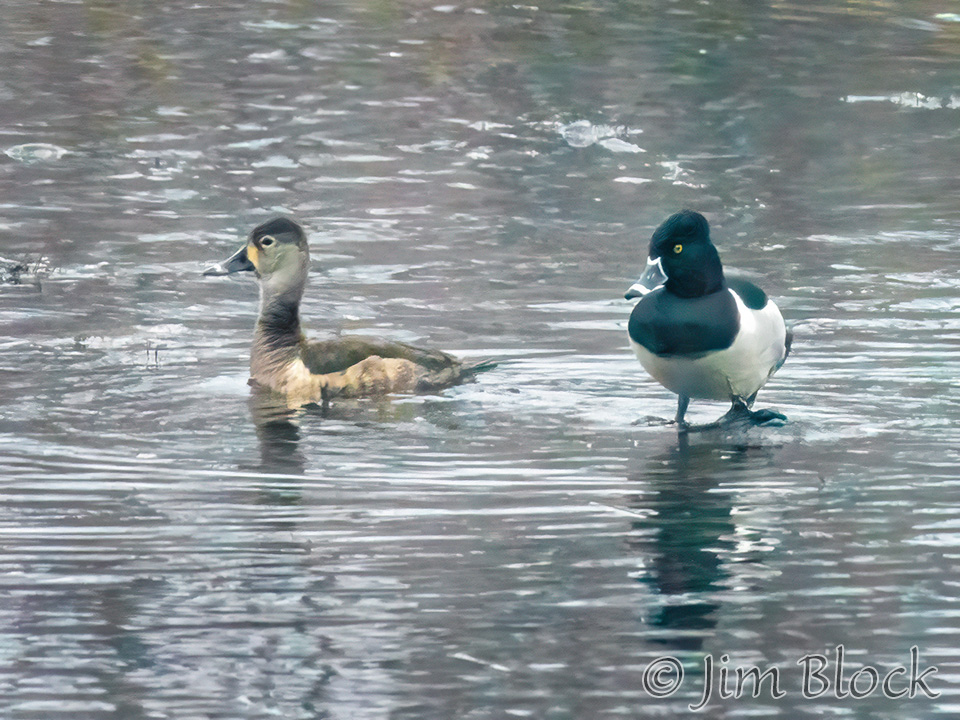
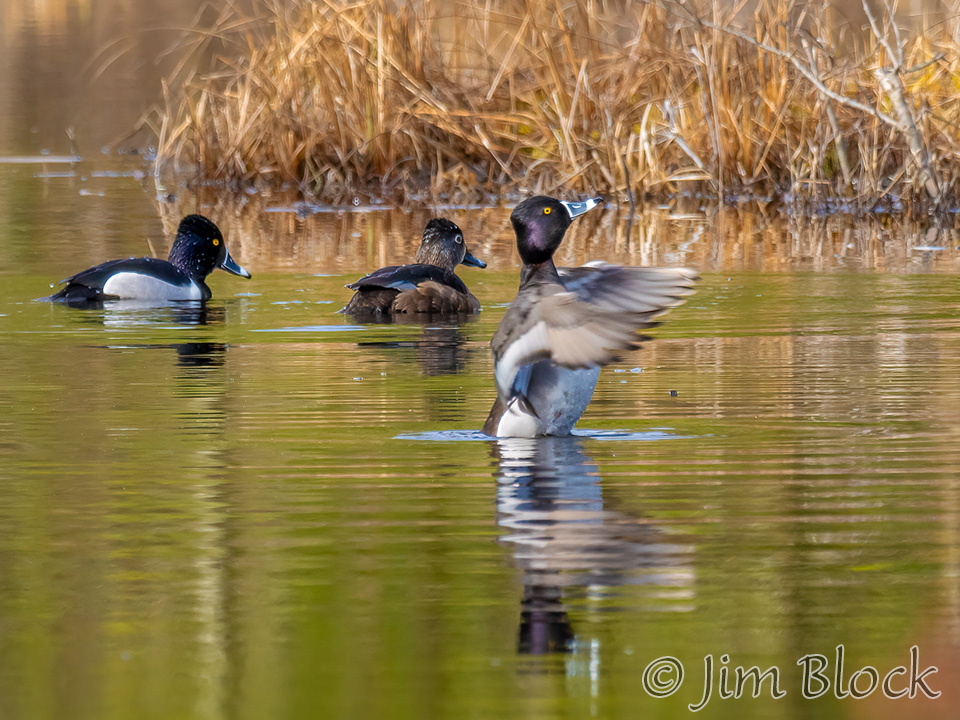
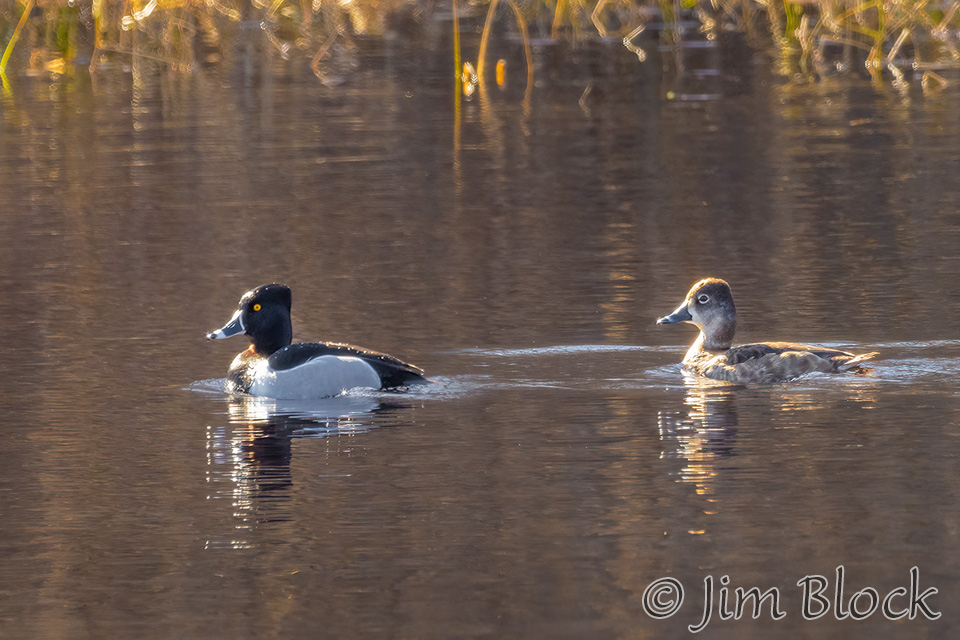
Mallards
A beautiful, but very common, duck species is the Mallard. They are present all year. In the winter look for them in fast-moving rivers that do not freeze. Here are five photos from four different towns taken in the last two weeks.
Eastern Bluebirds
Moving to land birds, we have beautiful Eastern Bluebirds that most commonly are seen in or near nesting boxes. Here are five photos.
Northern Cardinal
From blue to red, we have a Northern Cardinal. We never see them in our yard. I don’t think they can fly as high above the river as we live. This one was singing to me while I tried to photograph Ring-necked Ducks on George Pond in Enfield.
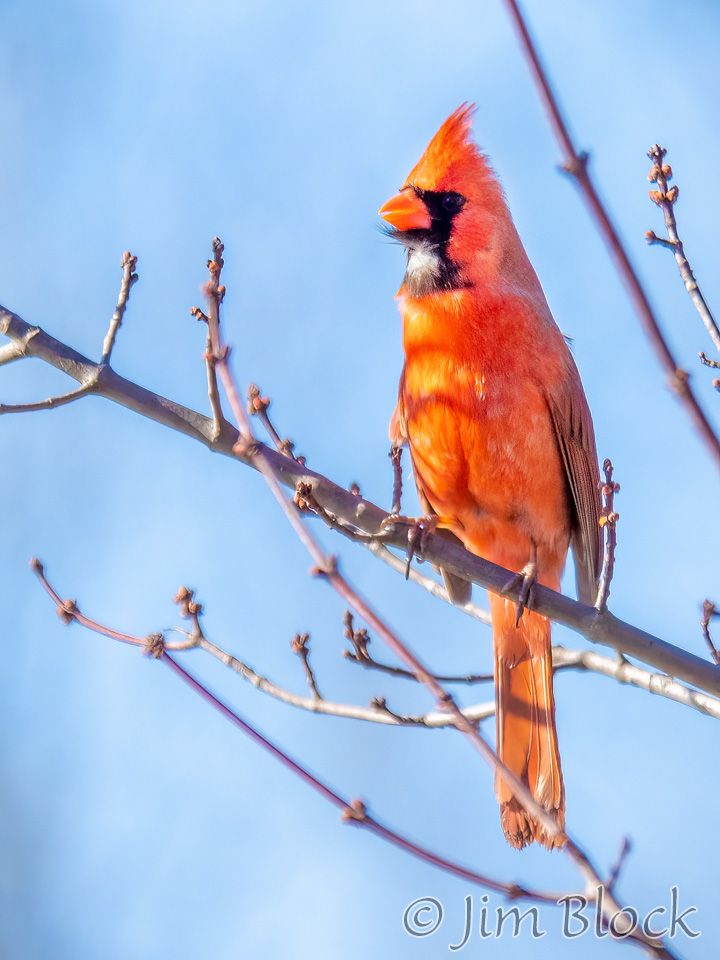
Yellow-bellied Sapsucker
Shortly before completing this post, a Yellow-bellied Sapsucker arrived at our suet feeder. I managed to get a few photos as it sat on our deck rail. Such a colorful bird.
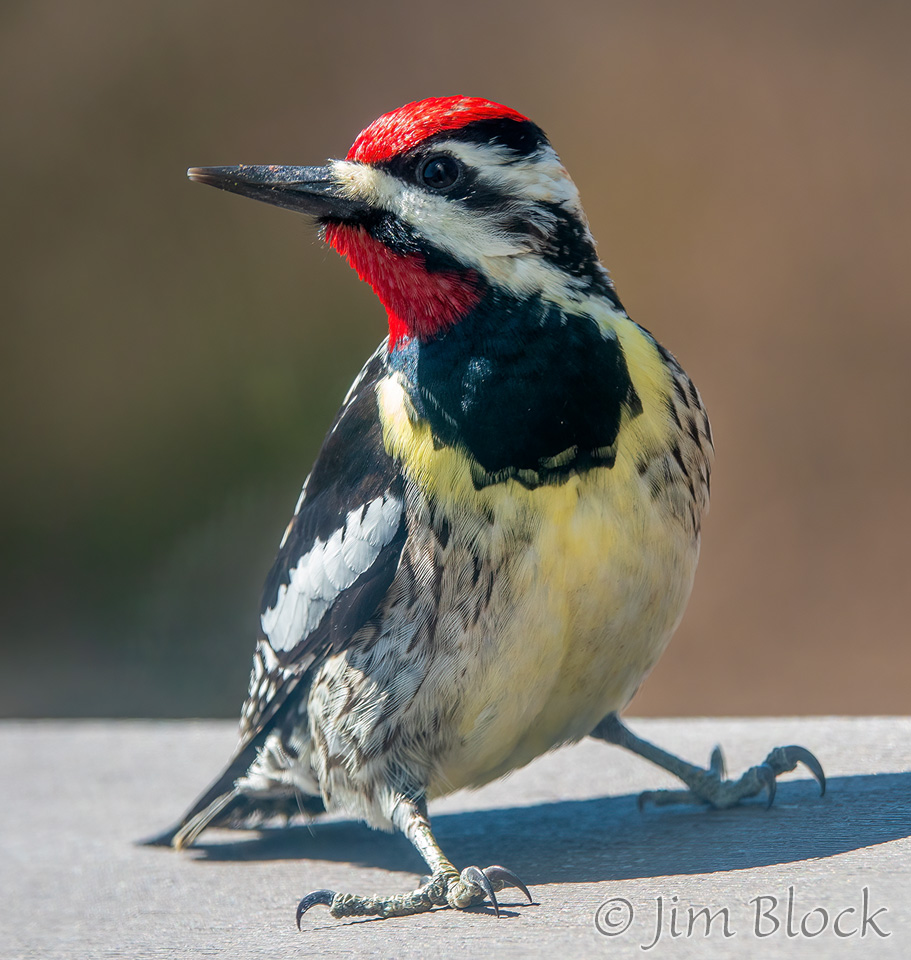
Turkeys
I came upon a large group of male Turkeys displaying, mostly for each other it seemed. Here are three of them.
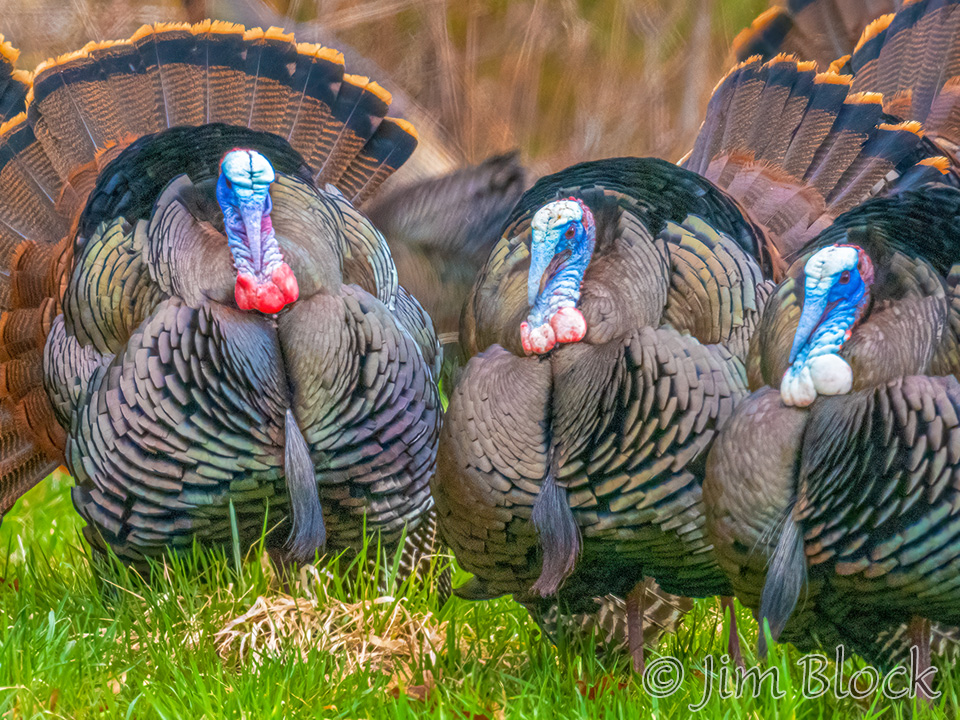
Brown Birds
Here I collect some brownish birds that I photographed in the last two weeks.
Mourning Doves are fairly common. I love their beautiful blue eye-ring.
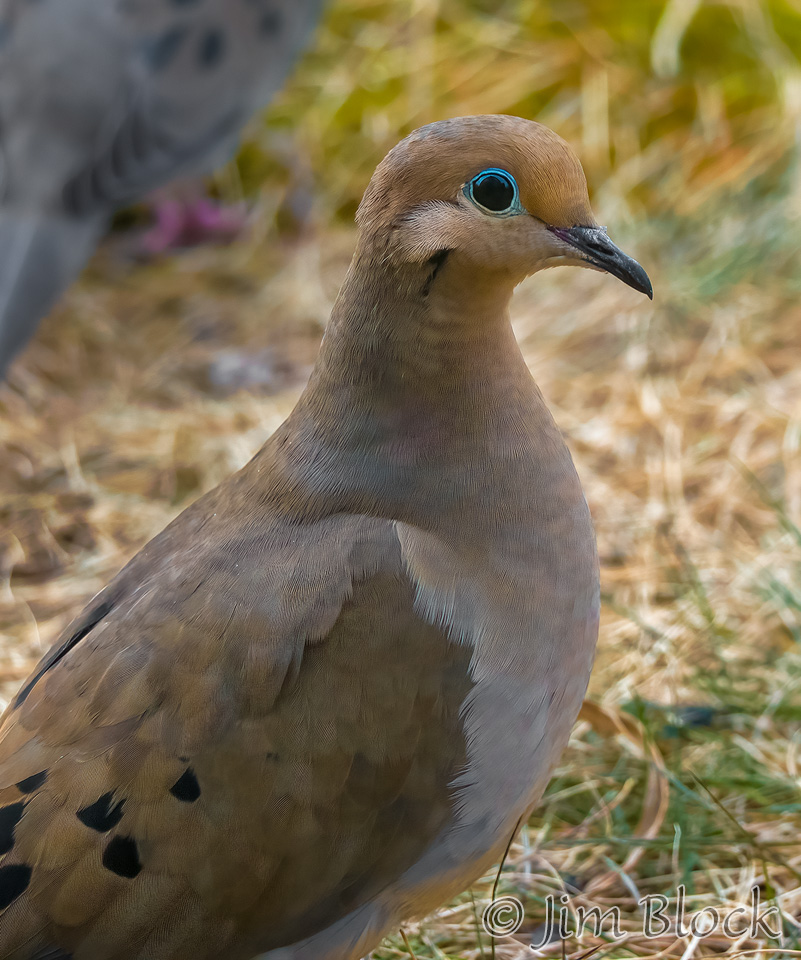
Driving home from a trip up the river, I was passing a spot where I saw a Barred Owl last year thinking that I haven’t seen it since. What should be sitting ahead, but a Barred Owl. Fortunately it cooperated so I could get a photo.
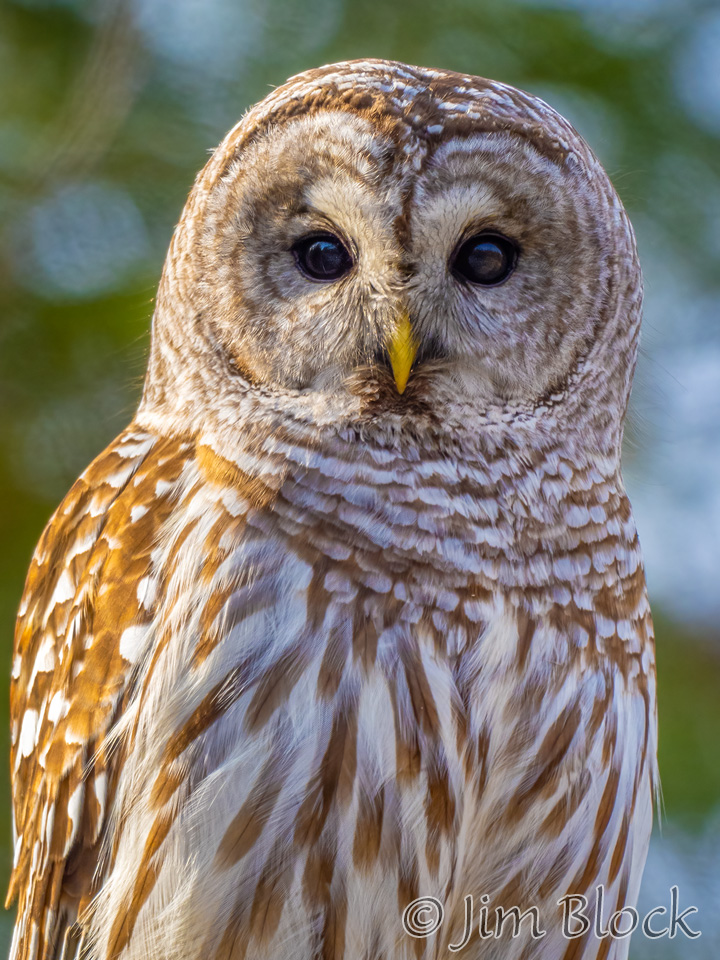
This ragged-looking bird is a Red-tailed Hawk.
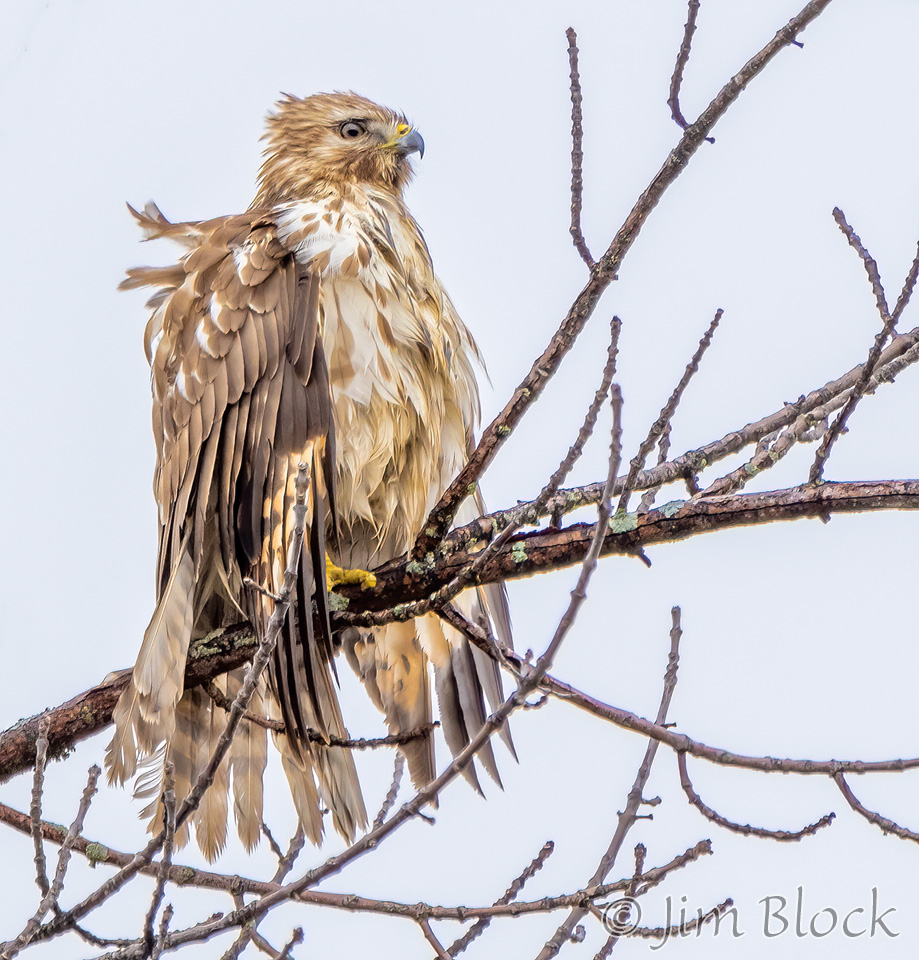
I much prefer photographing birds in a natural setting, rather than a man-made environment. But here is a Red-shouldered Hawk on a power line.
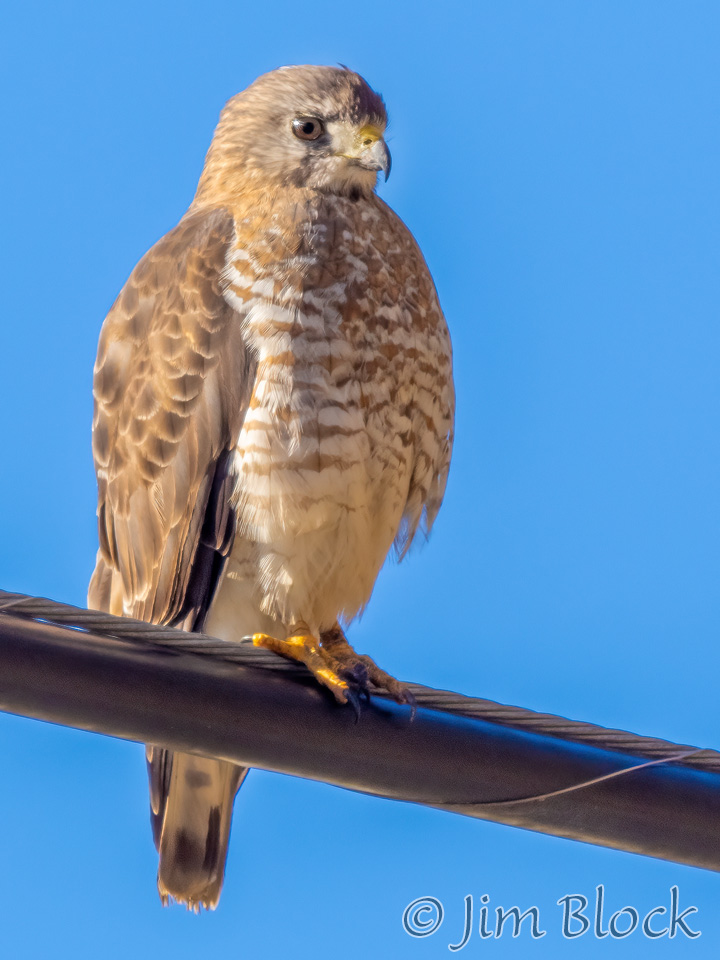
I travelled to West Lebanon to try to photograph the Great Horned Owl that Wayne Scott found. It was very far away, a frustrating experience photographically, but I’m glad I saw it. It is better for birders with scopes than photographers. Below is a greatly cropped photo.
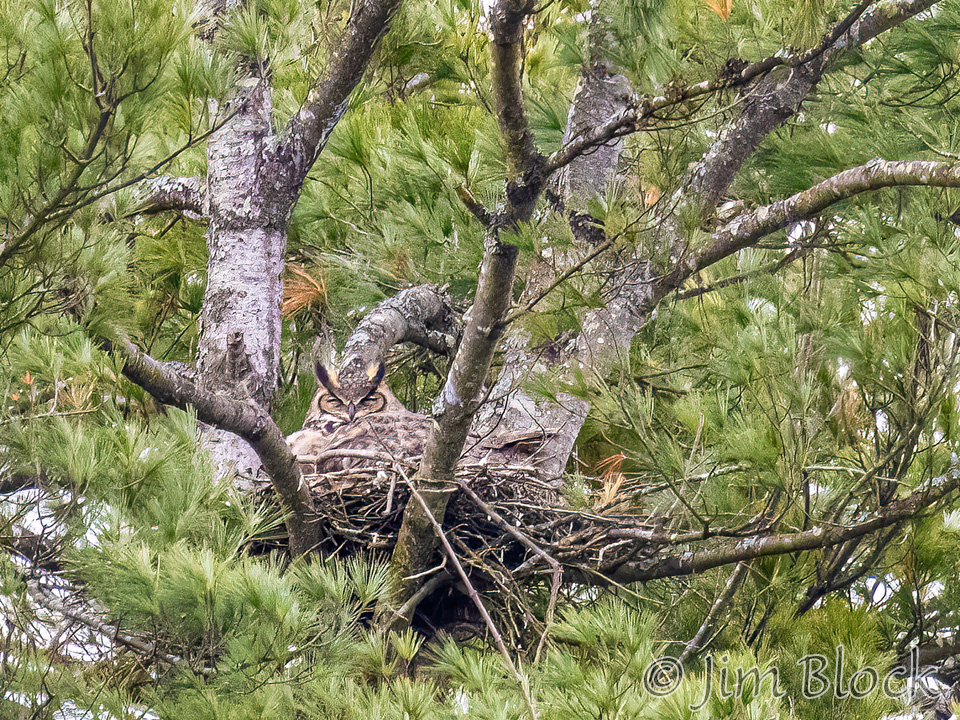
Some call them timberdoodles, but the proper name is the American Woodcock. Heading home along Rt. 4A I found this bird just off the road.
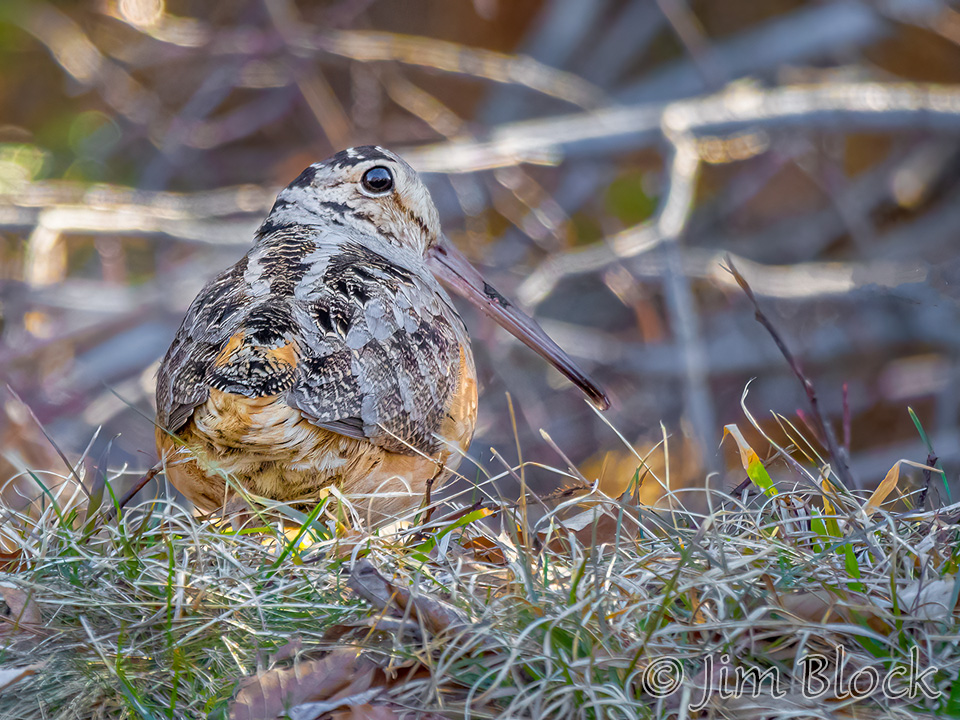
On a hike with Jann, I saw something heading up a tree and thought Brown Creeper. I rushed over and managed to capture it with a short, walk-around lens before it got too high. This bird is a favorite of mine, perhaps because it is so hard to photograph. If you want to see better photos of this species, you can CLICK HERE.
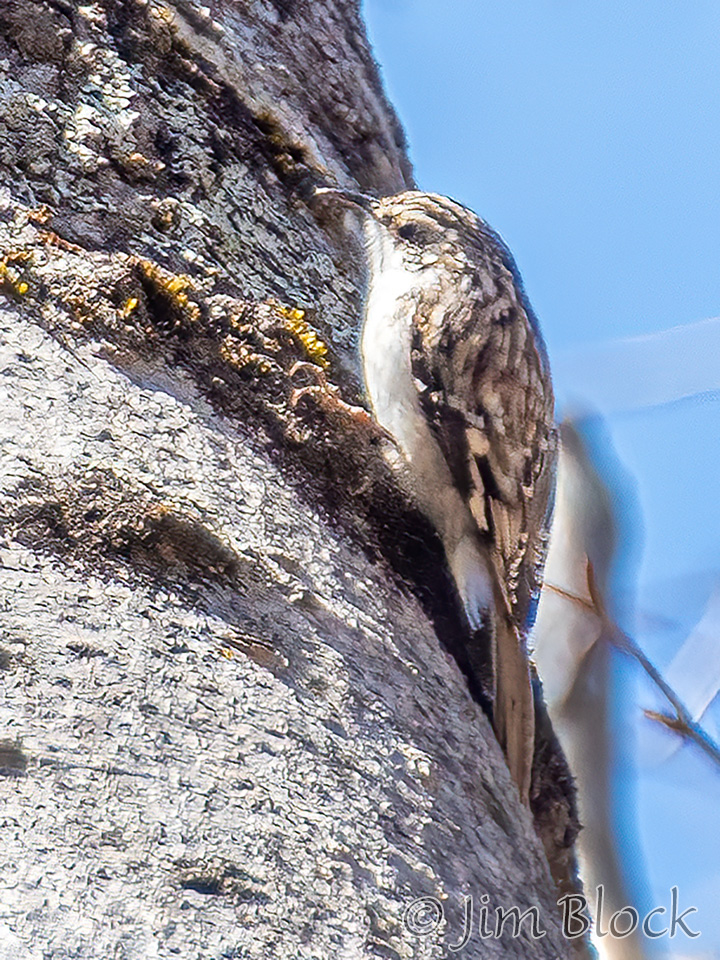
Who can think of spring birds without thinking of the Eastern Phoebe. This flycatcher arrives early.
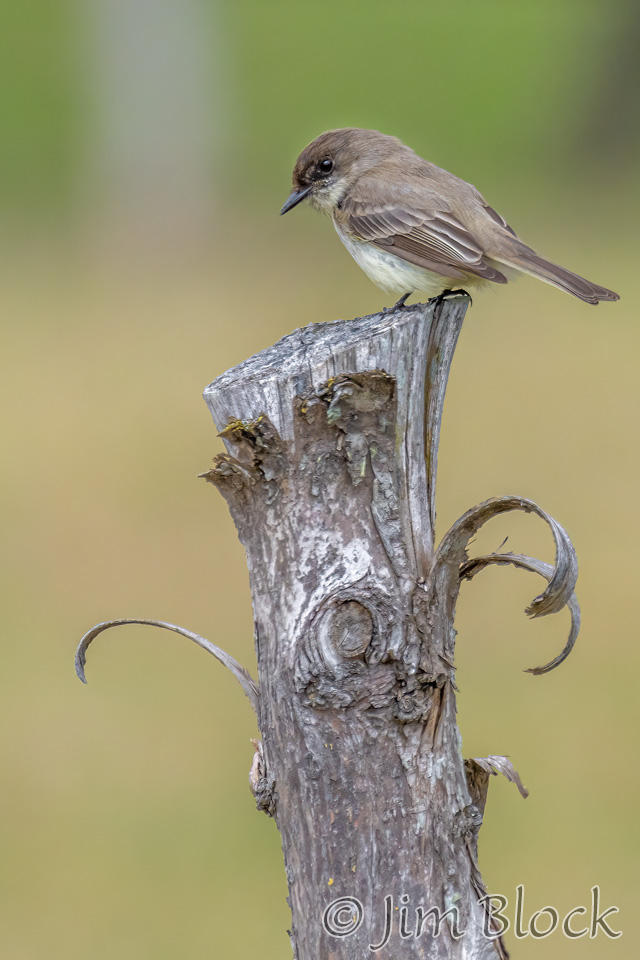
The Northern Flicker is mostly brownish, so I put it here.
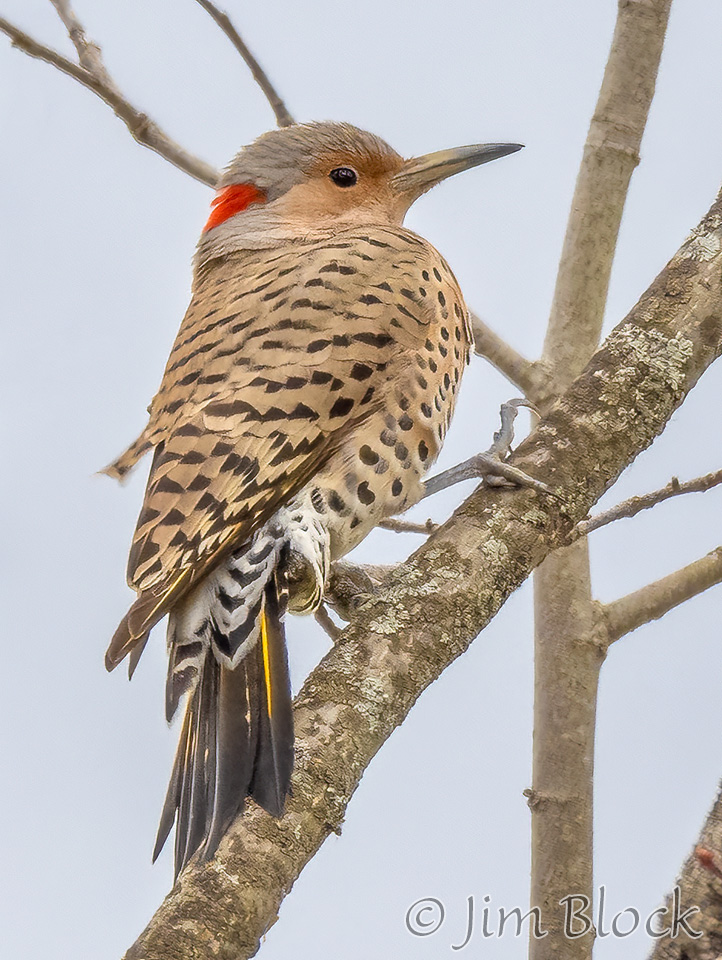
Black, Grey, and White Birds
There were a pair of Great Egrets in the Pompy area of Norwich for at least three days. I’ve seen them there before. The first time I saw them this spring they were far away. The second time was better.
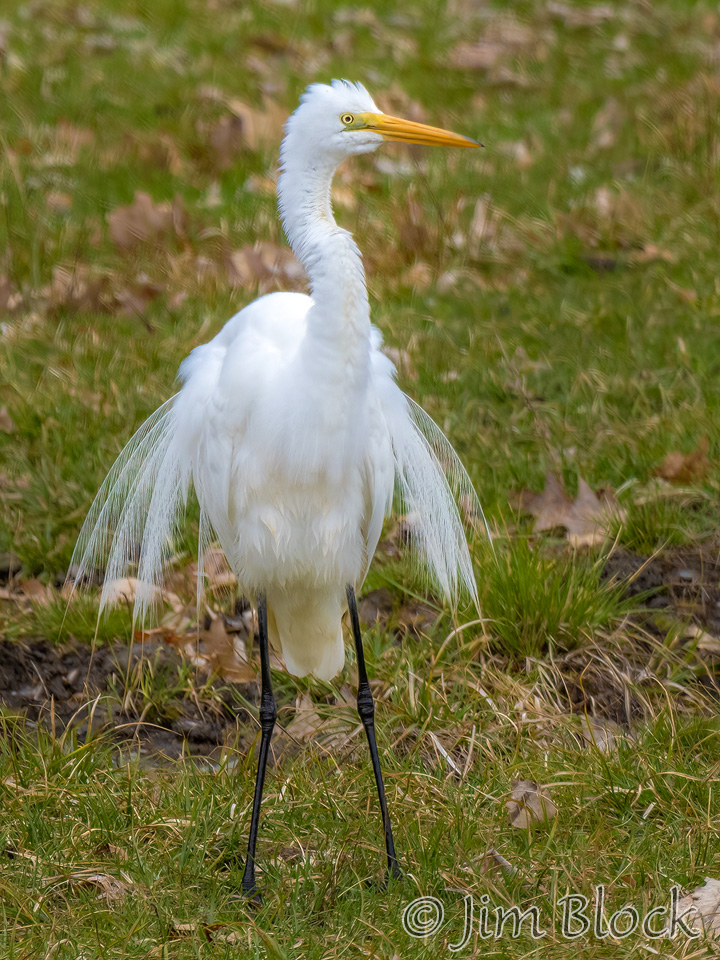
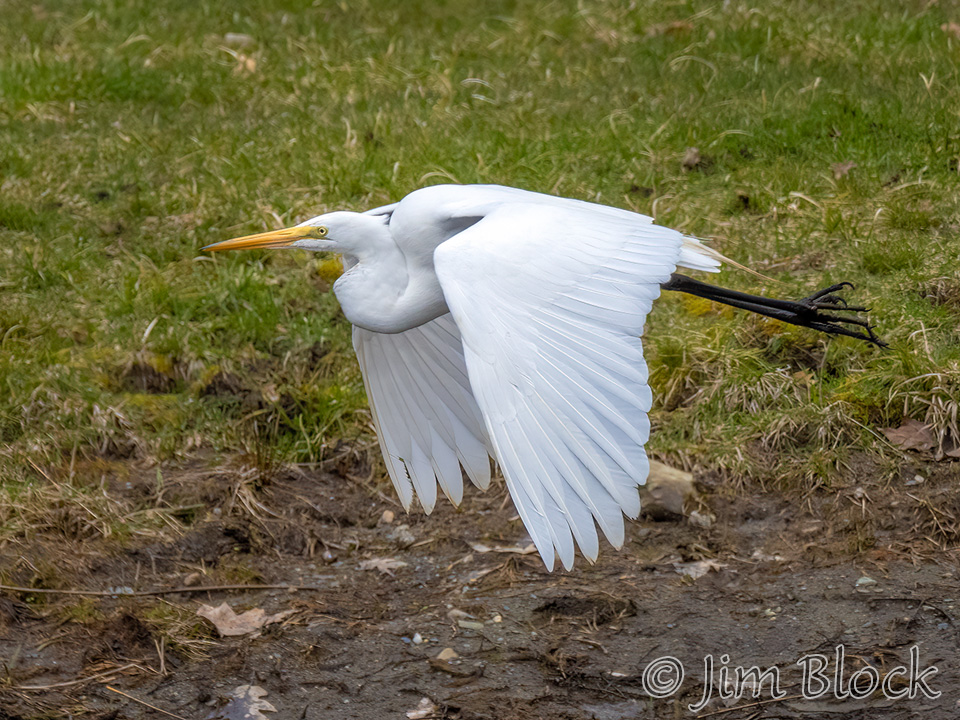
While not fully black, Common Grackles are blackish, unless the sun shines and highlights their amazing colors.
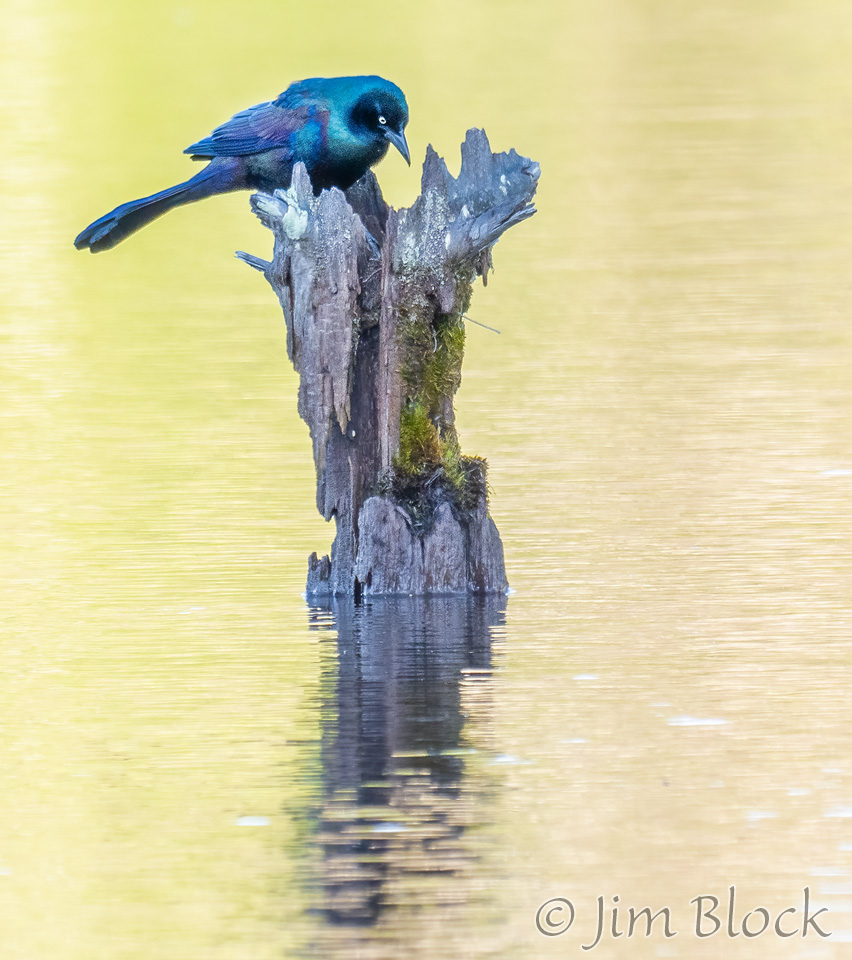
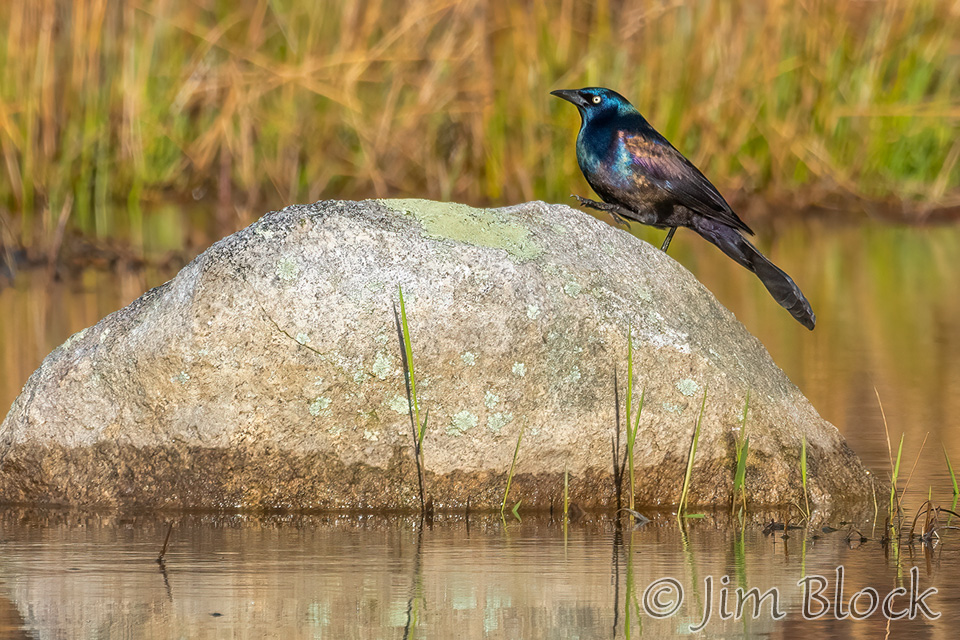
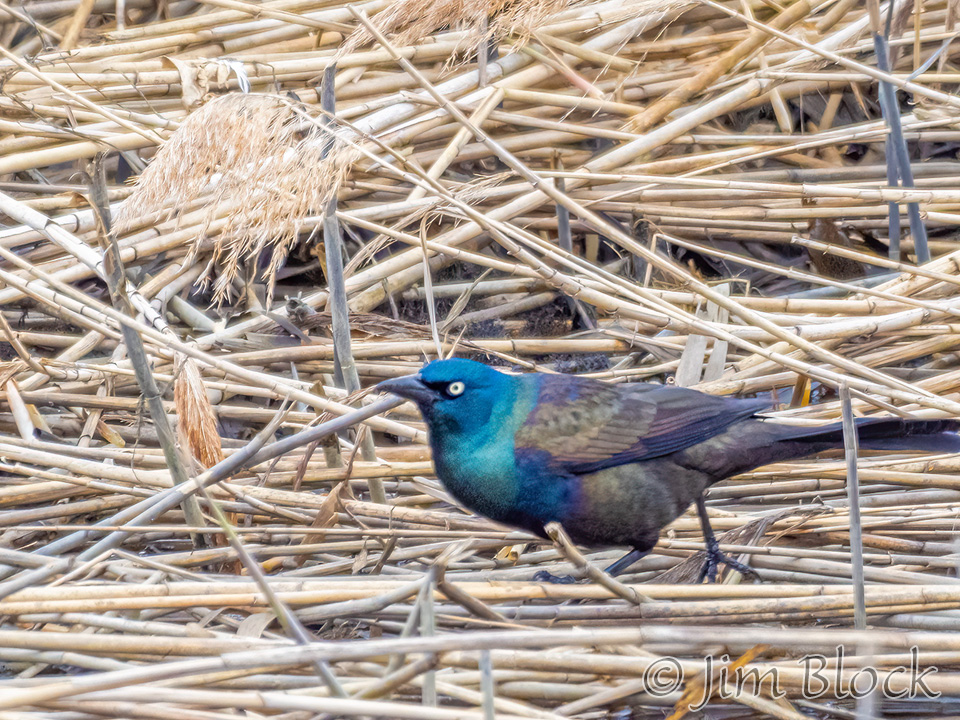
The American Crow is clearly a black bird. Here is one in Hanover.
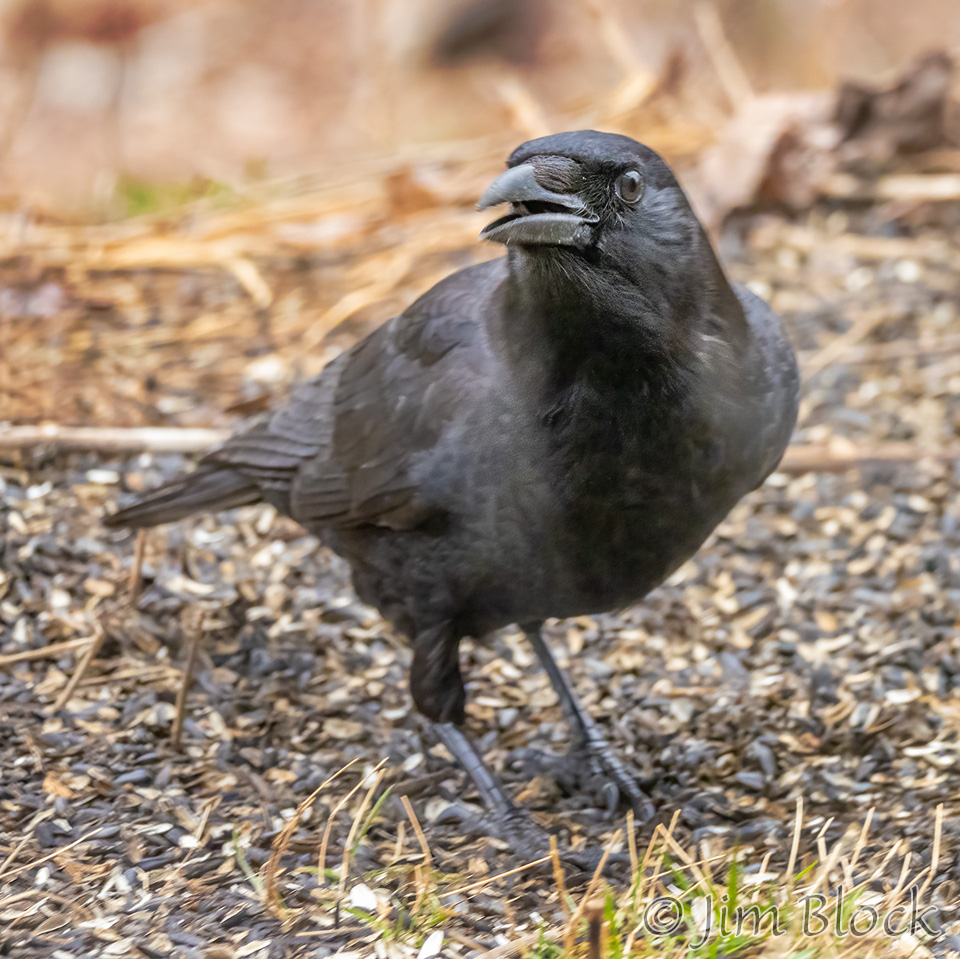
It has black in its name, so I guess it fits here, the other harbinger of spring, the Red-winged Blackbird.
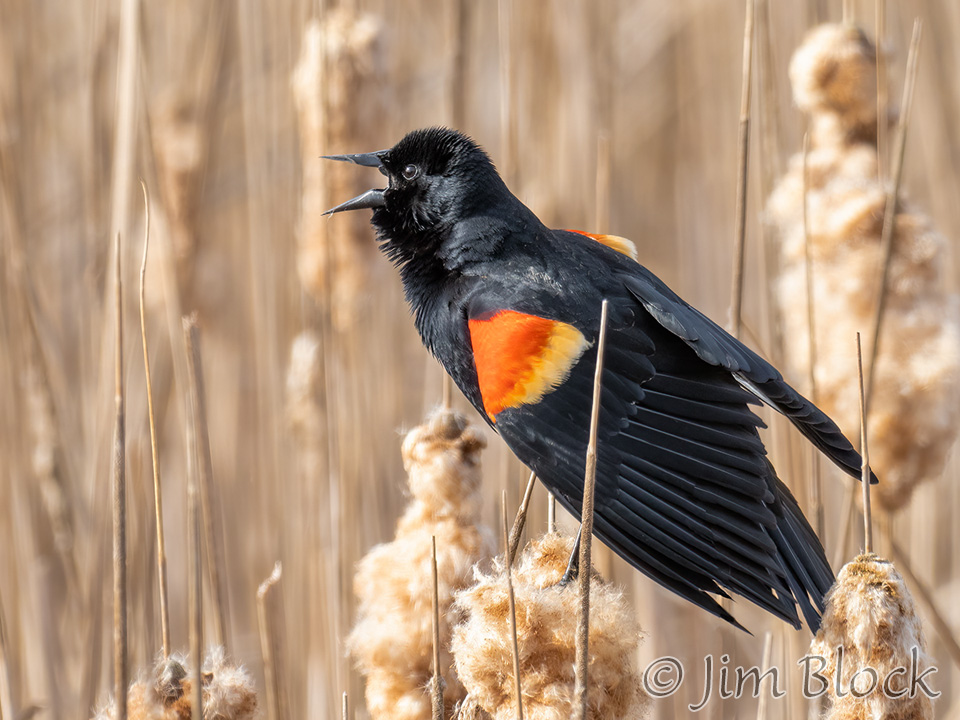
Although the Great Blue Heron has some blue hues, it is mostly a black, grey, and white bird.
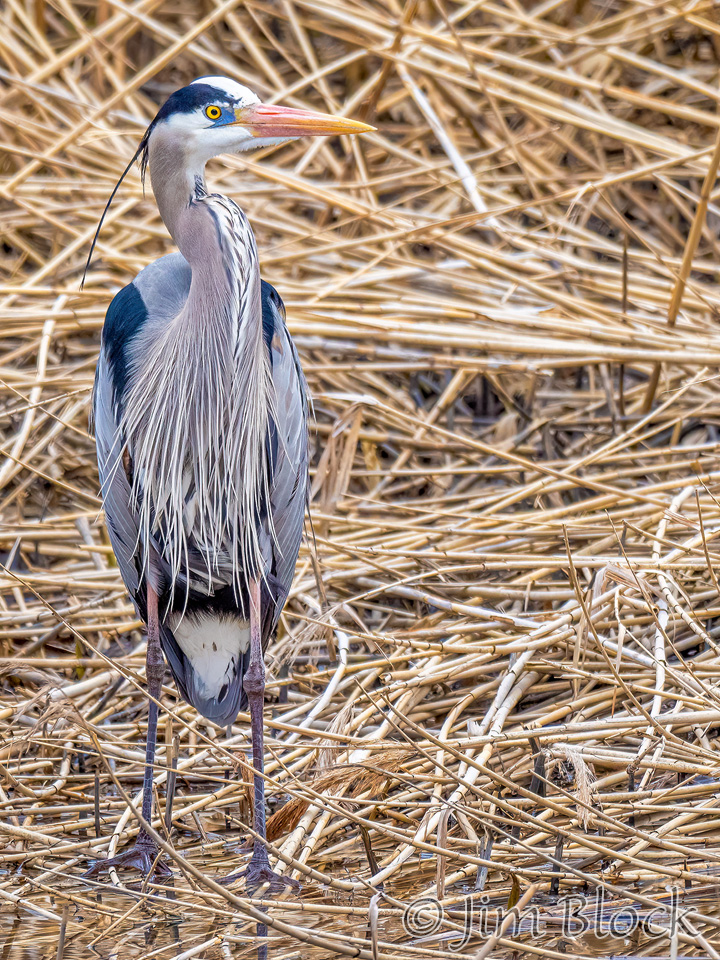
First Warbler of Spring
Often Pine Warblers arrive early, but this year the first warbler I found was a Palm Warbler. I photographed this species two days in a row in the same location. They normally move farther north to nest. Her are five photos of Palm Warblers from the last few days. You might notice some frost in one of the photos.

